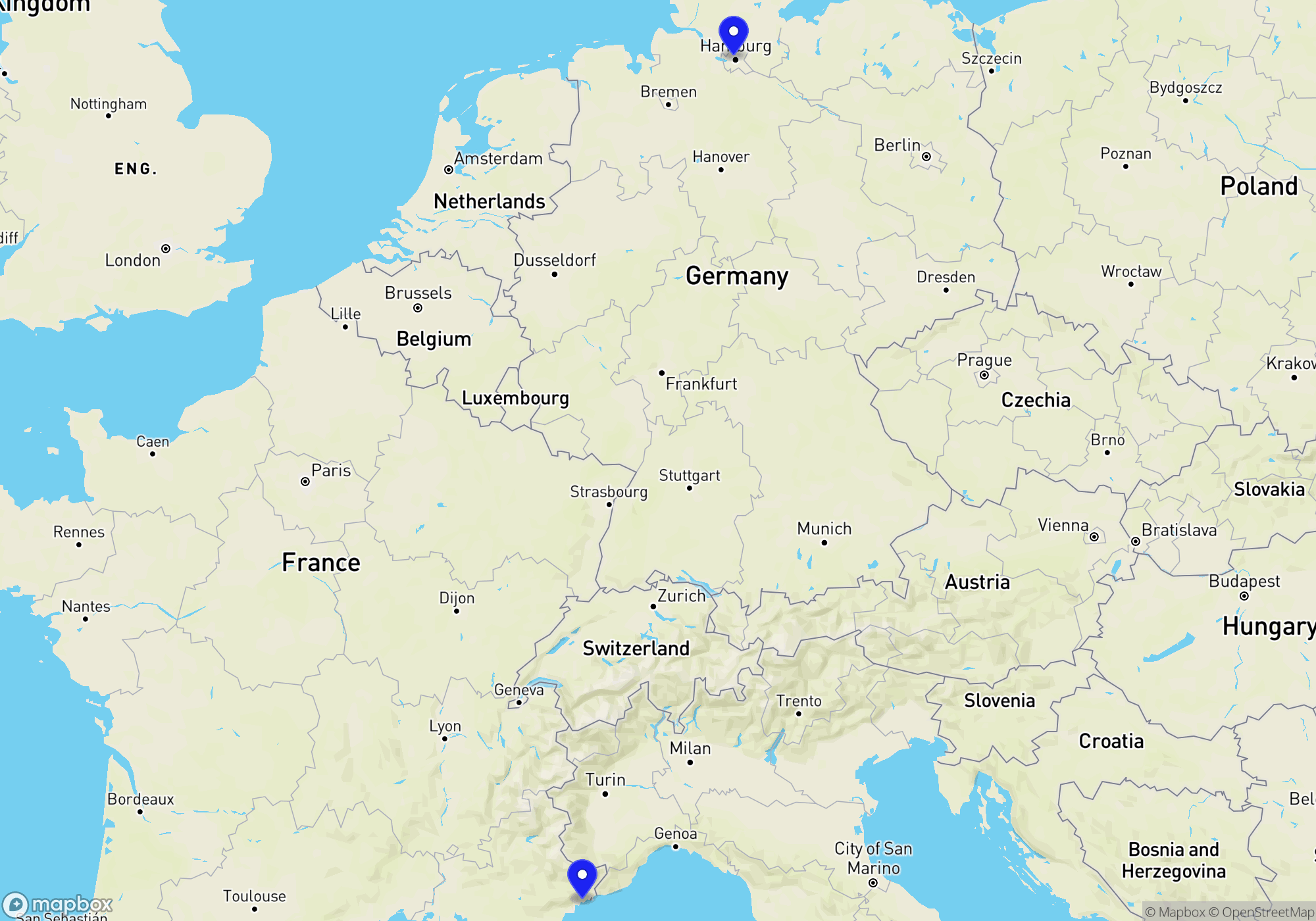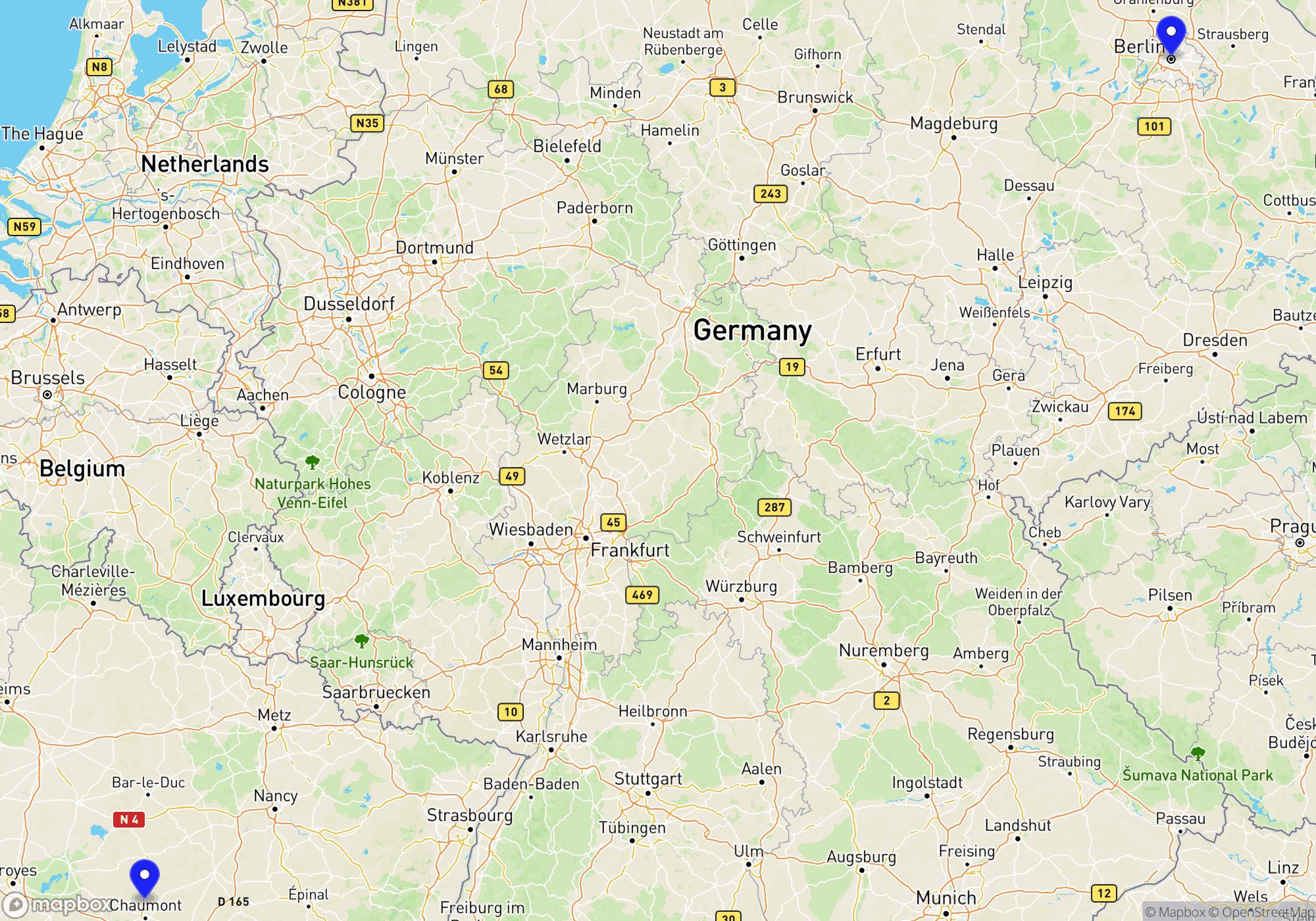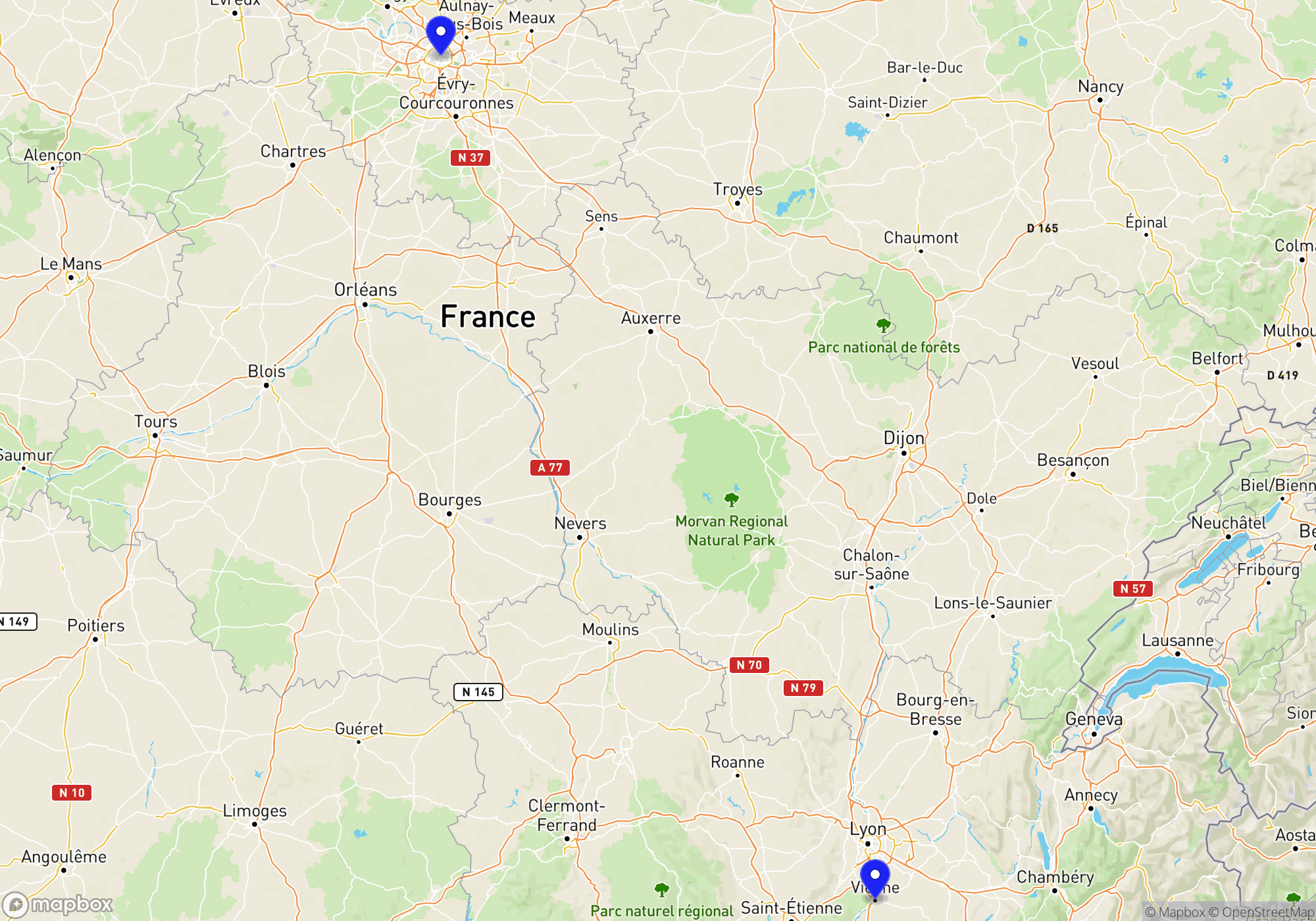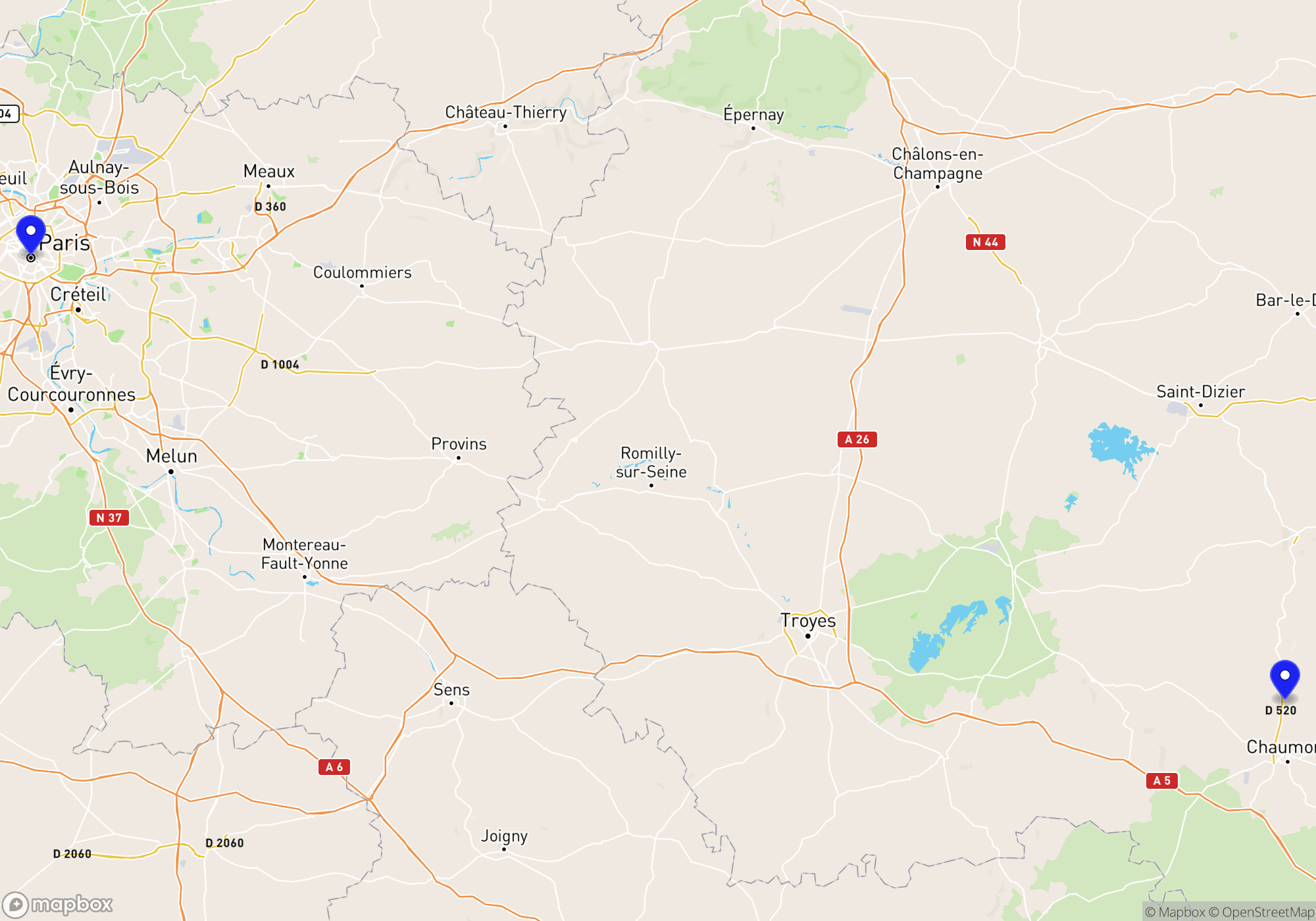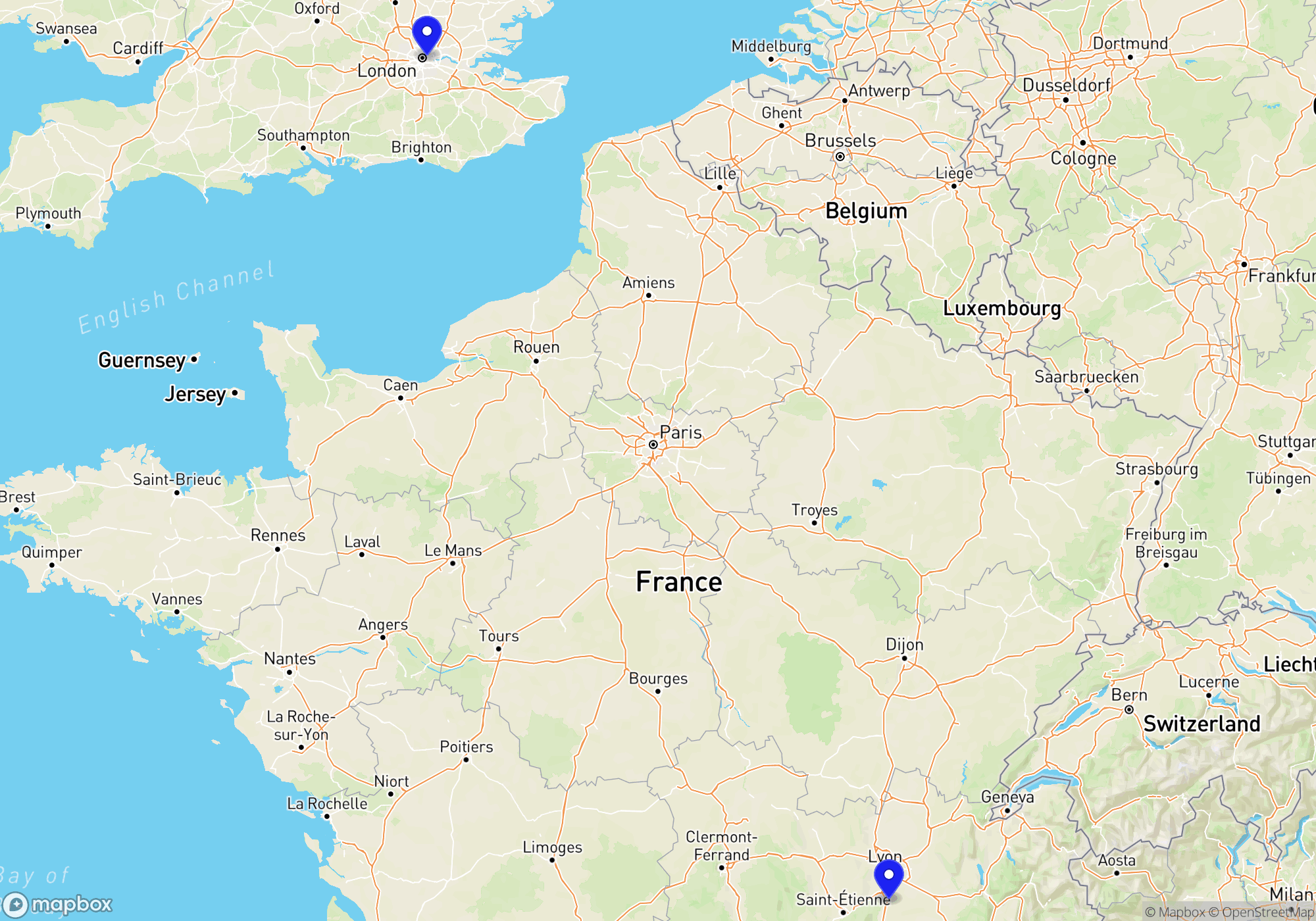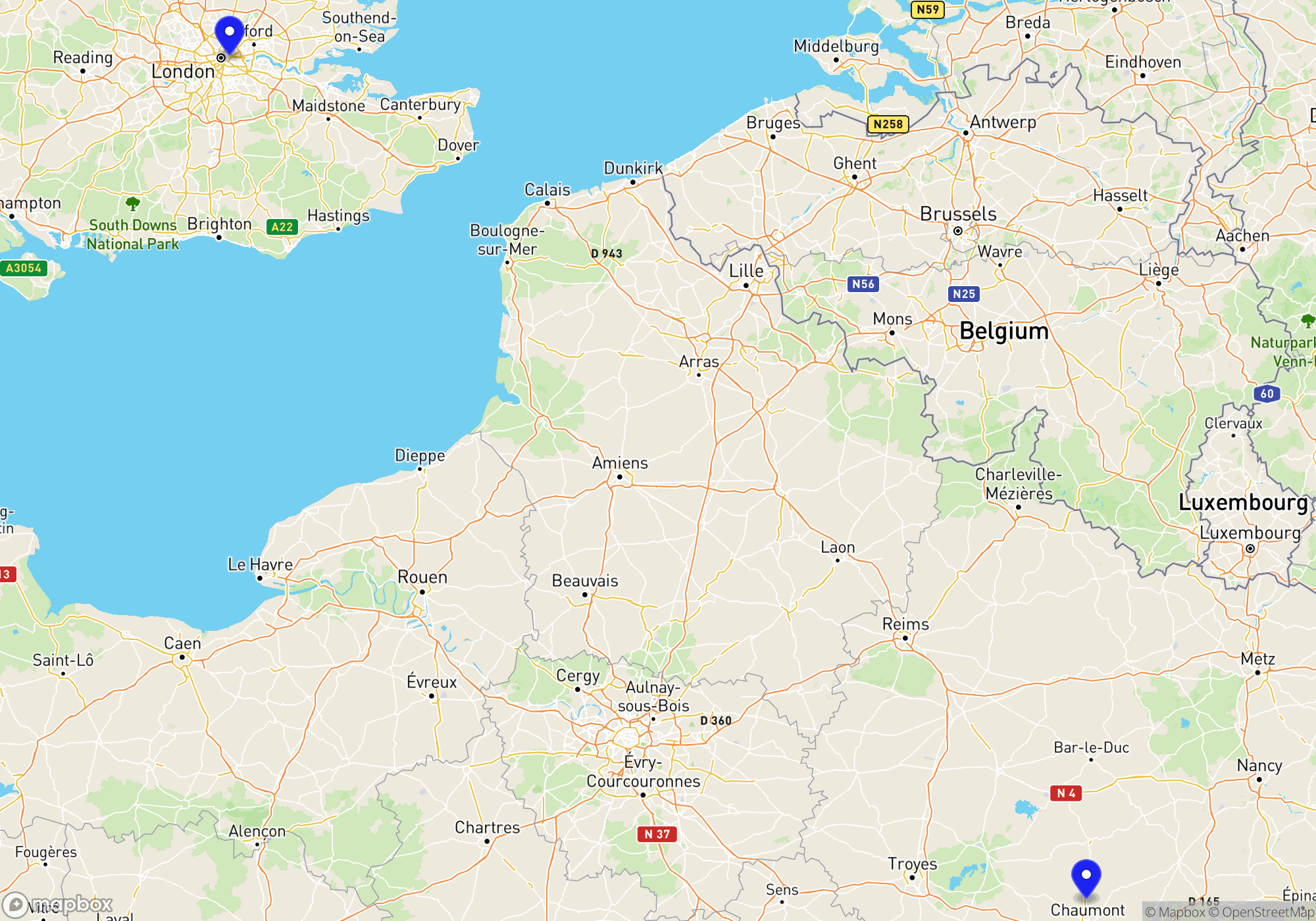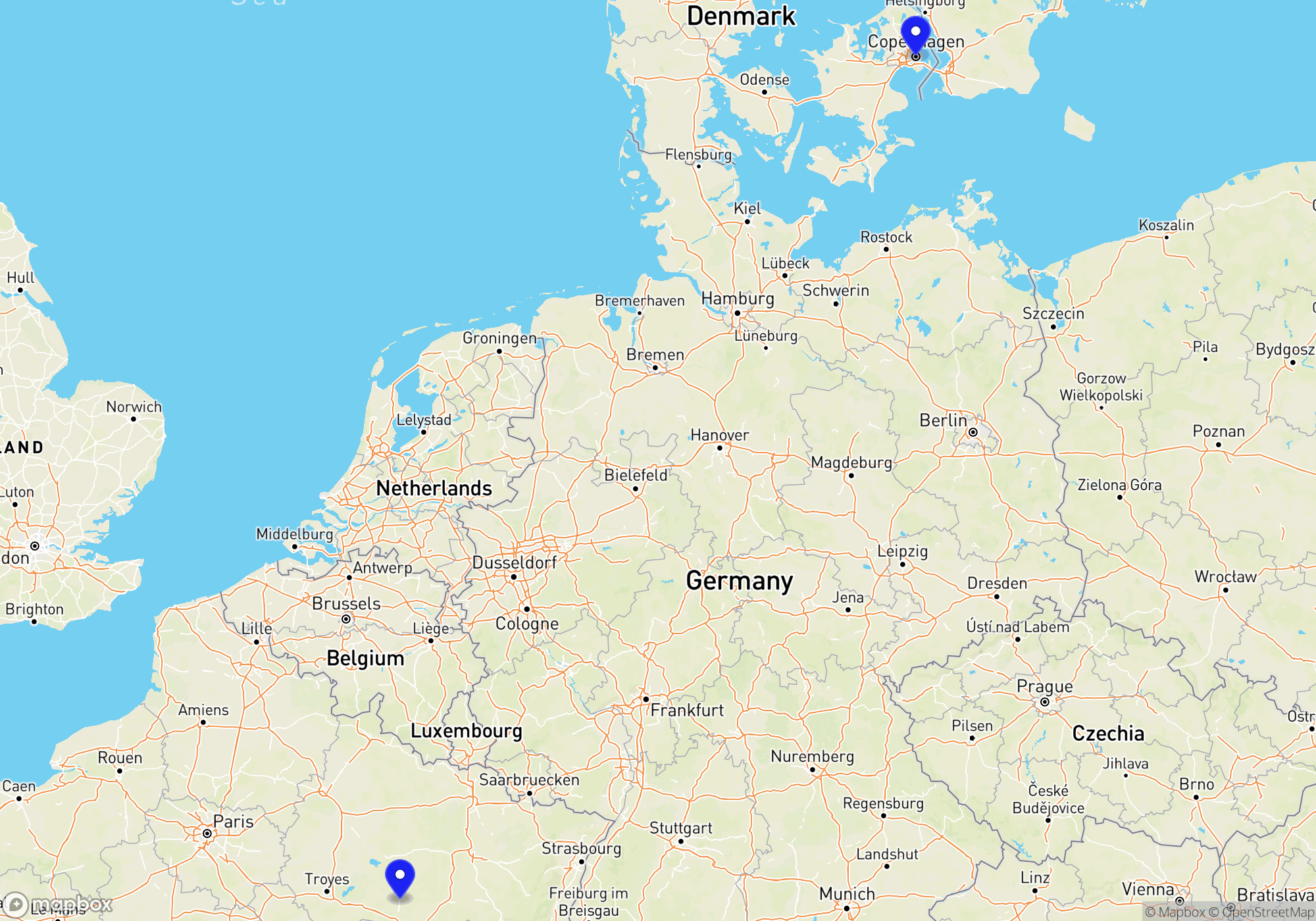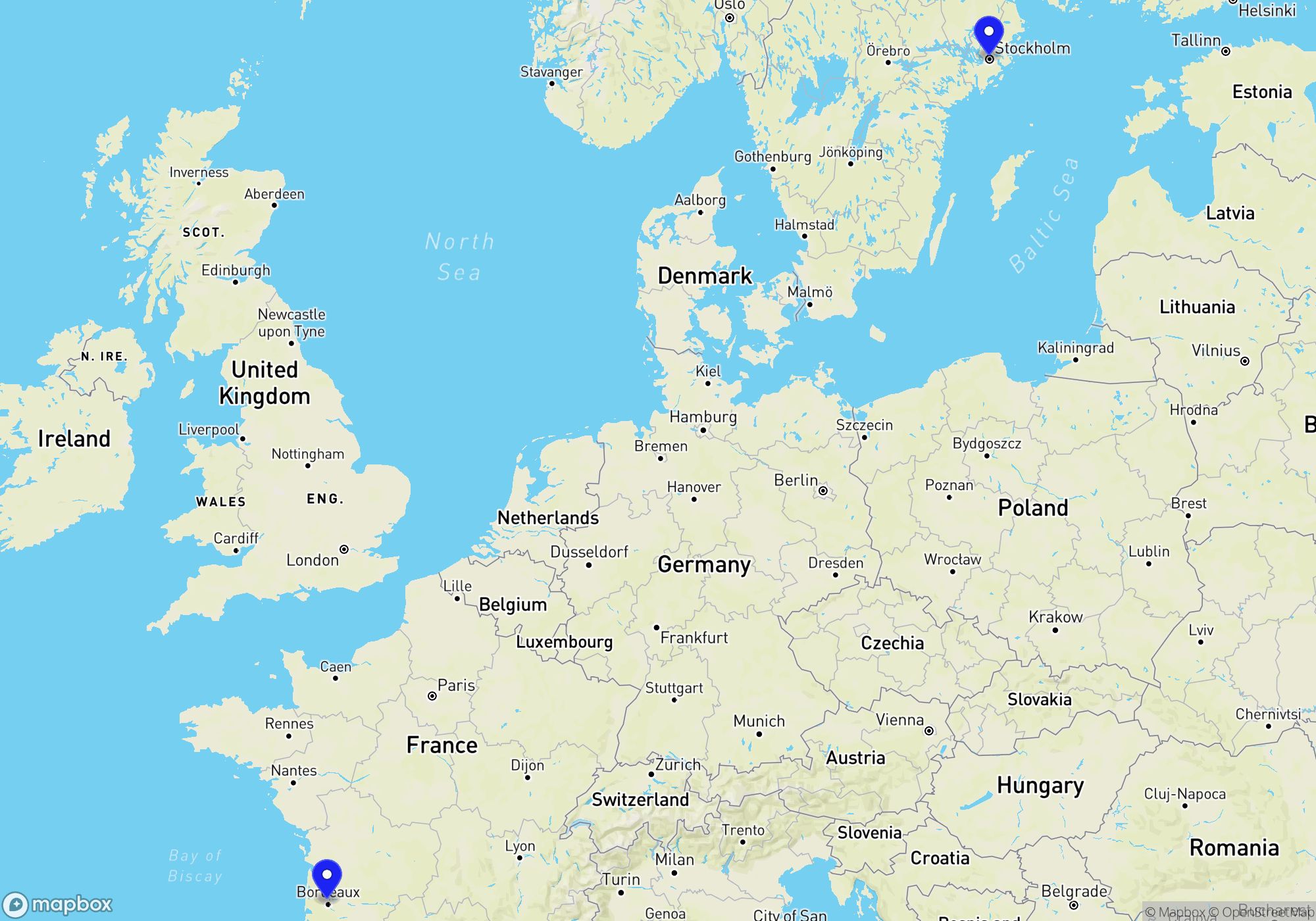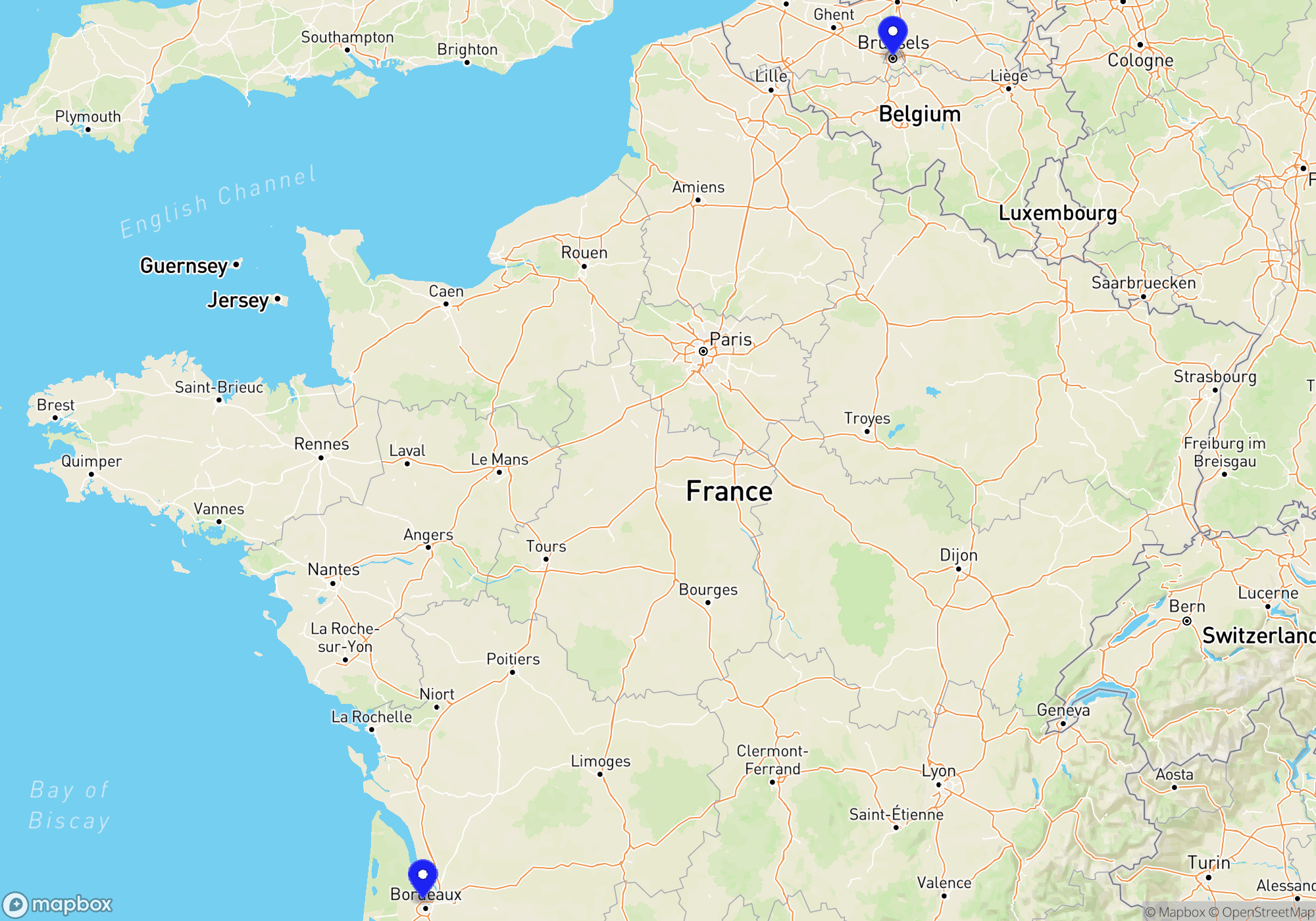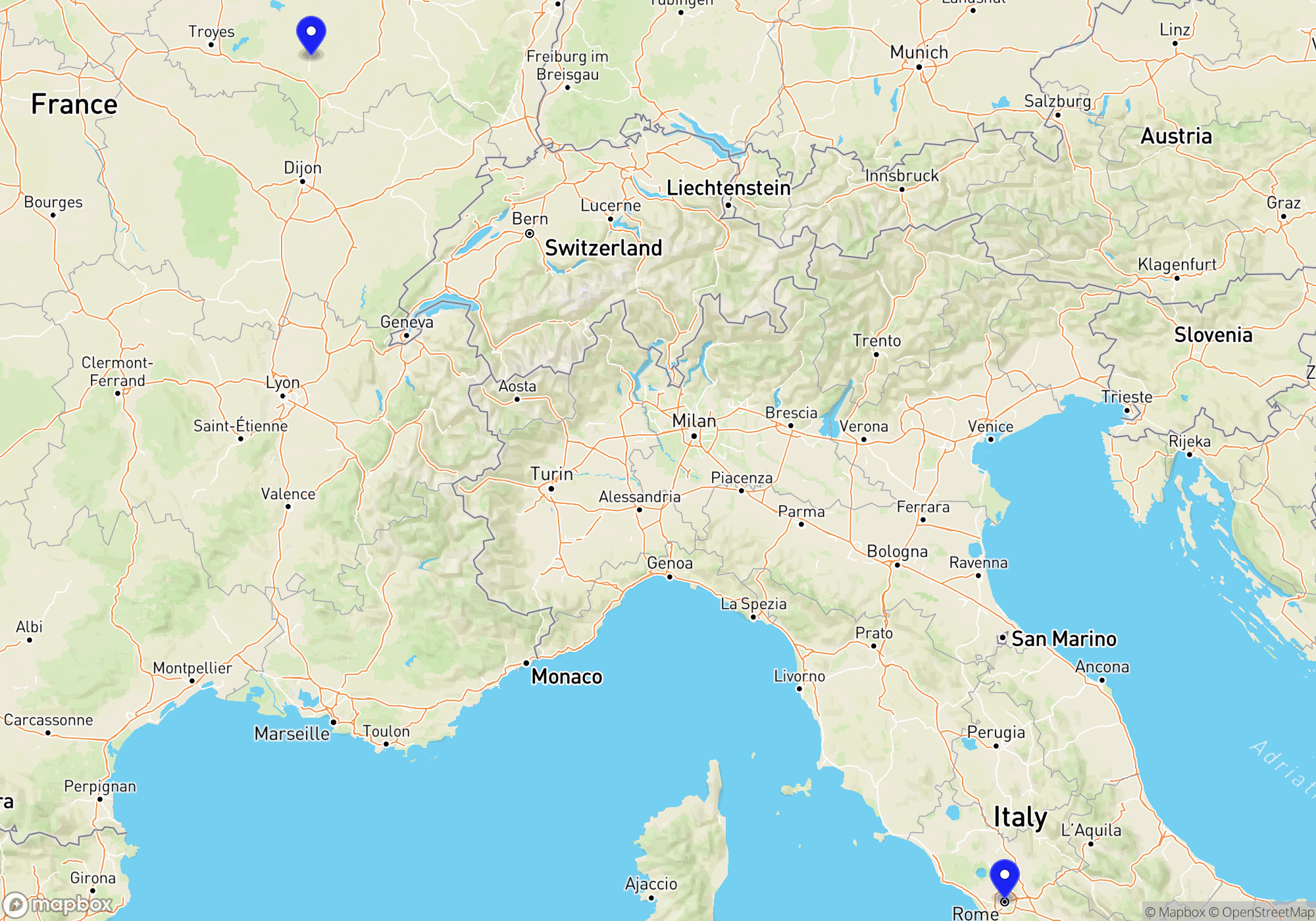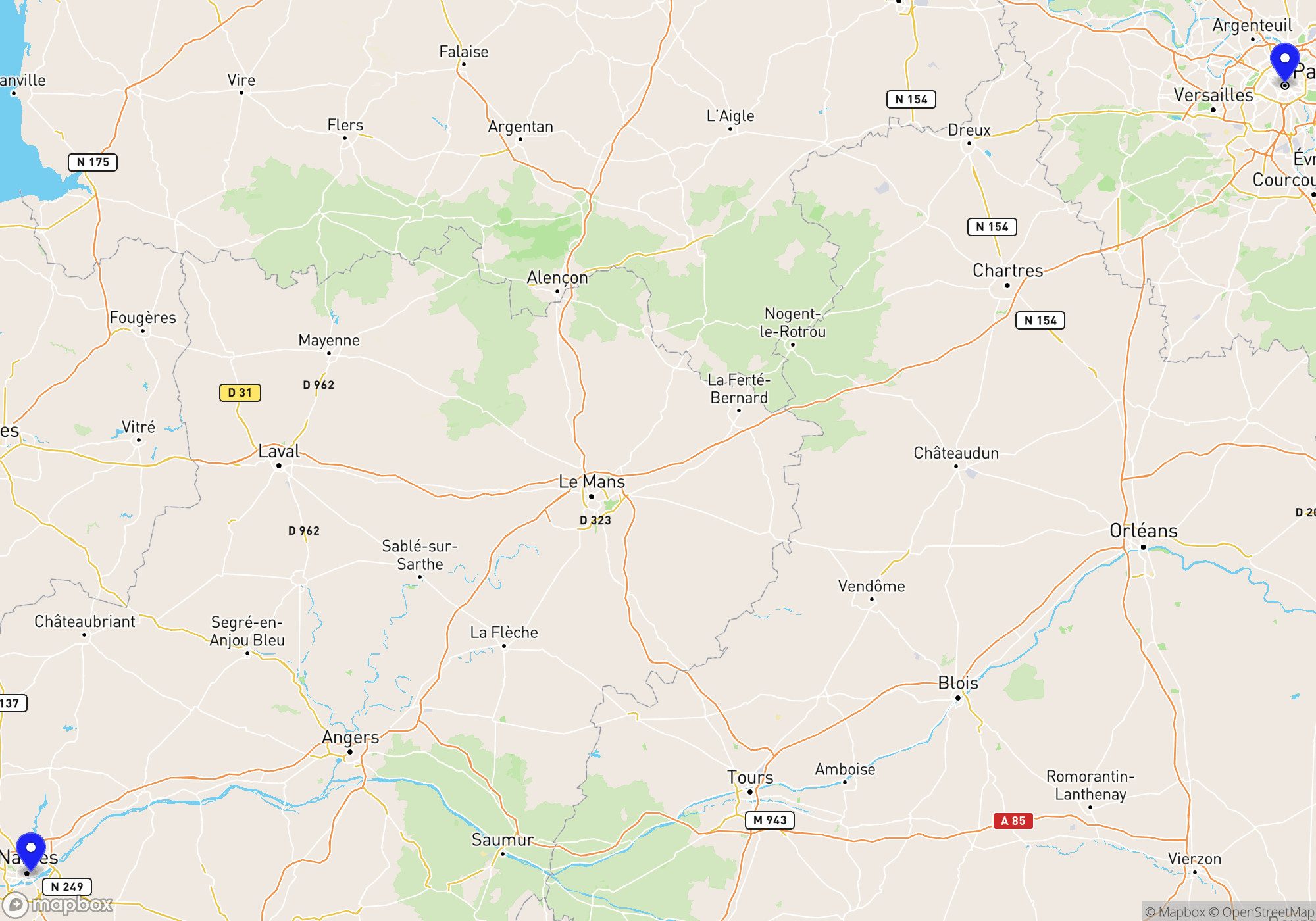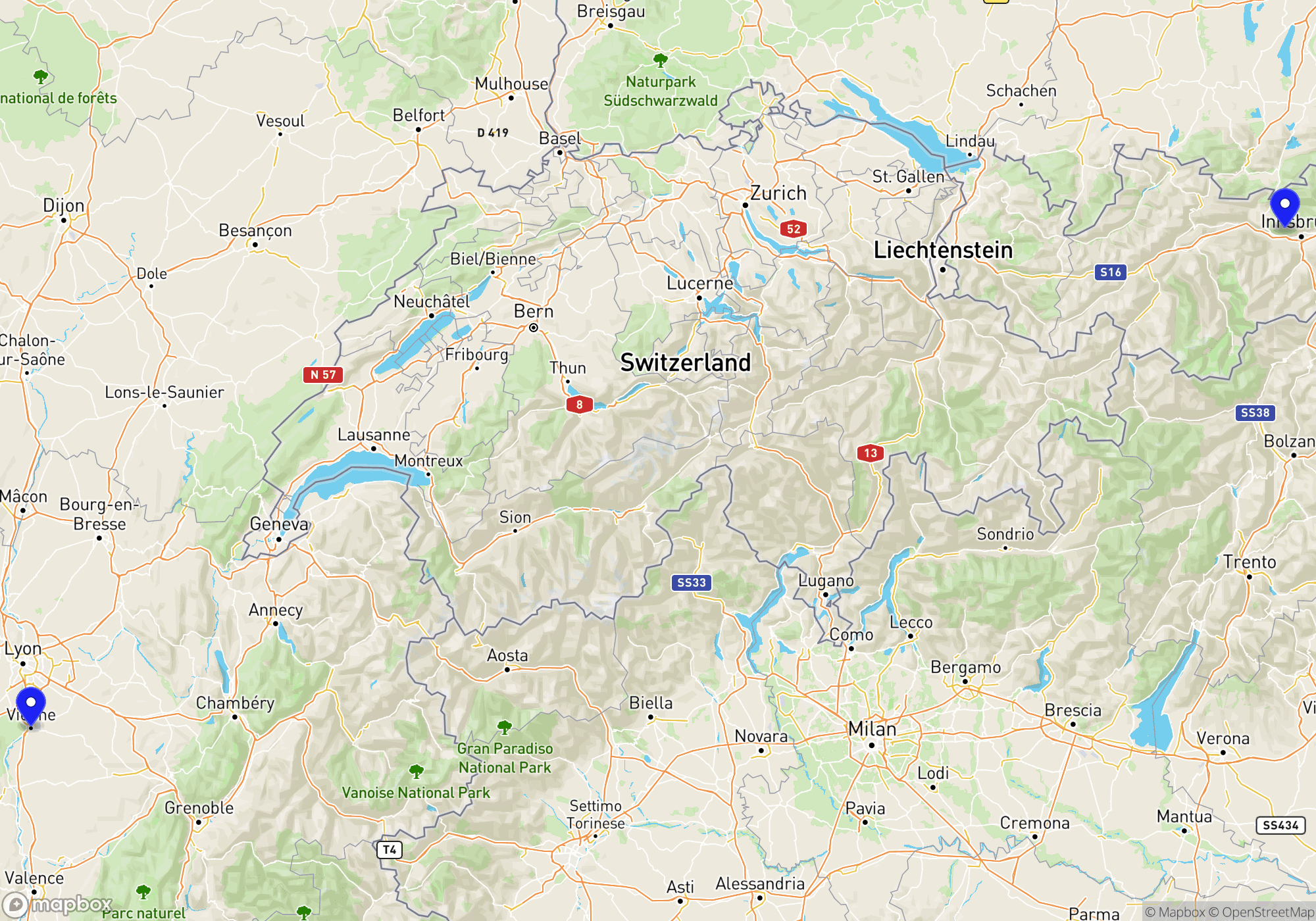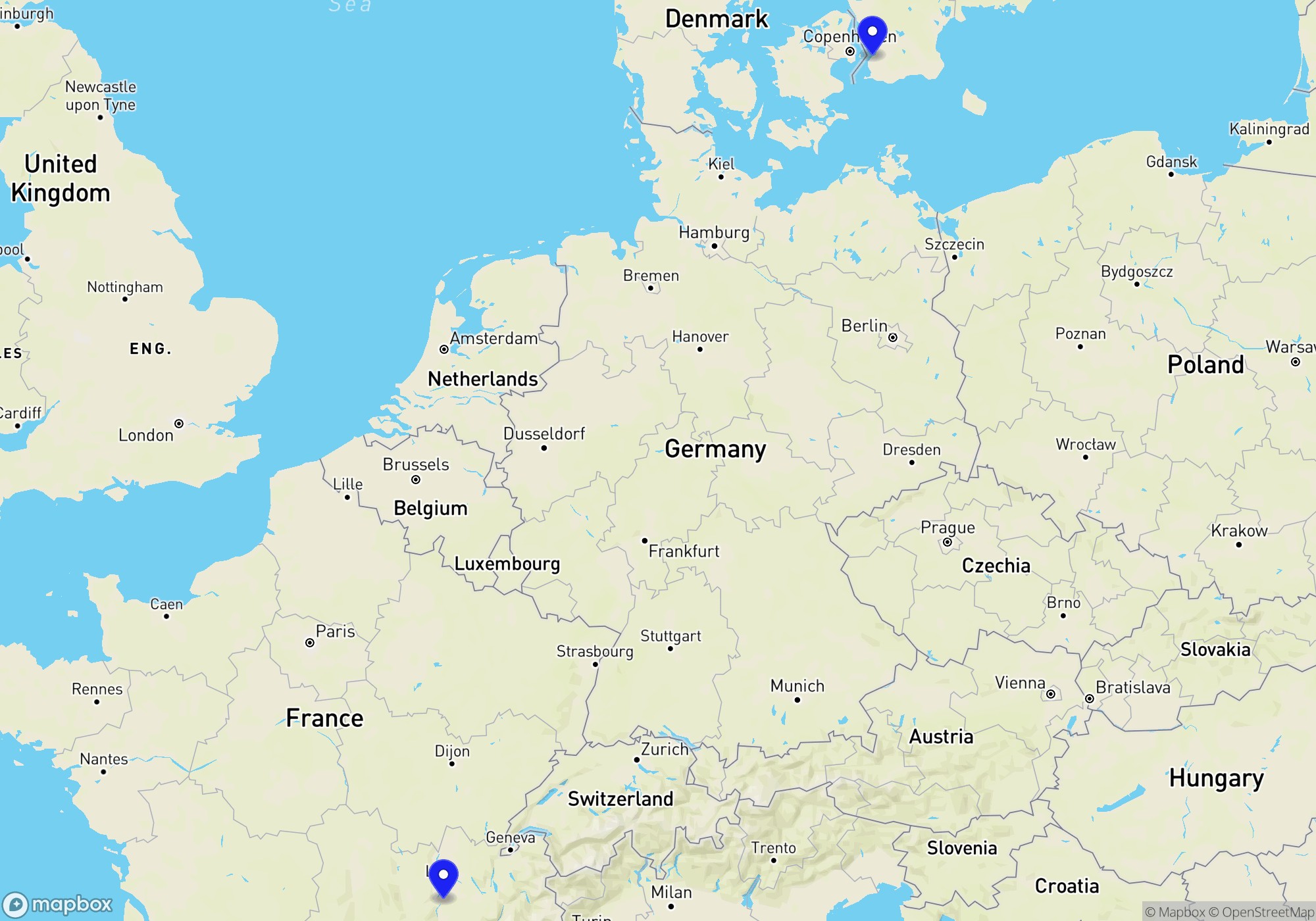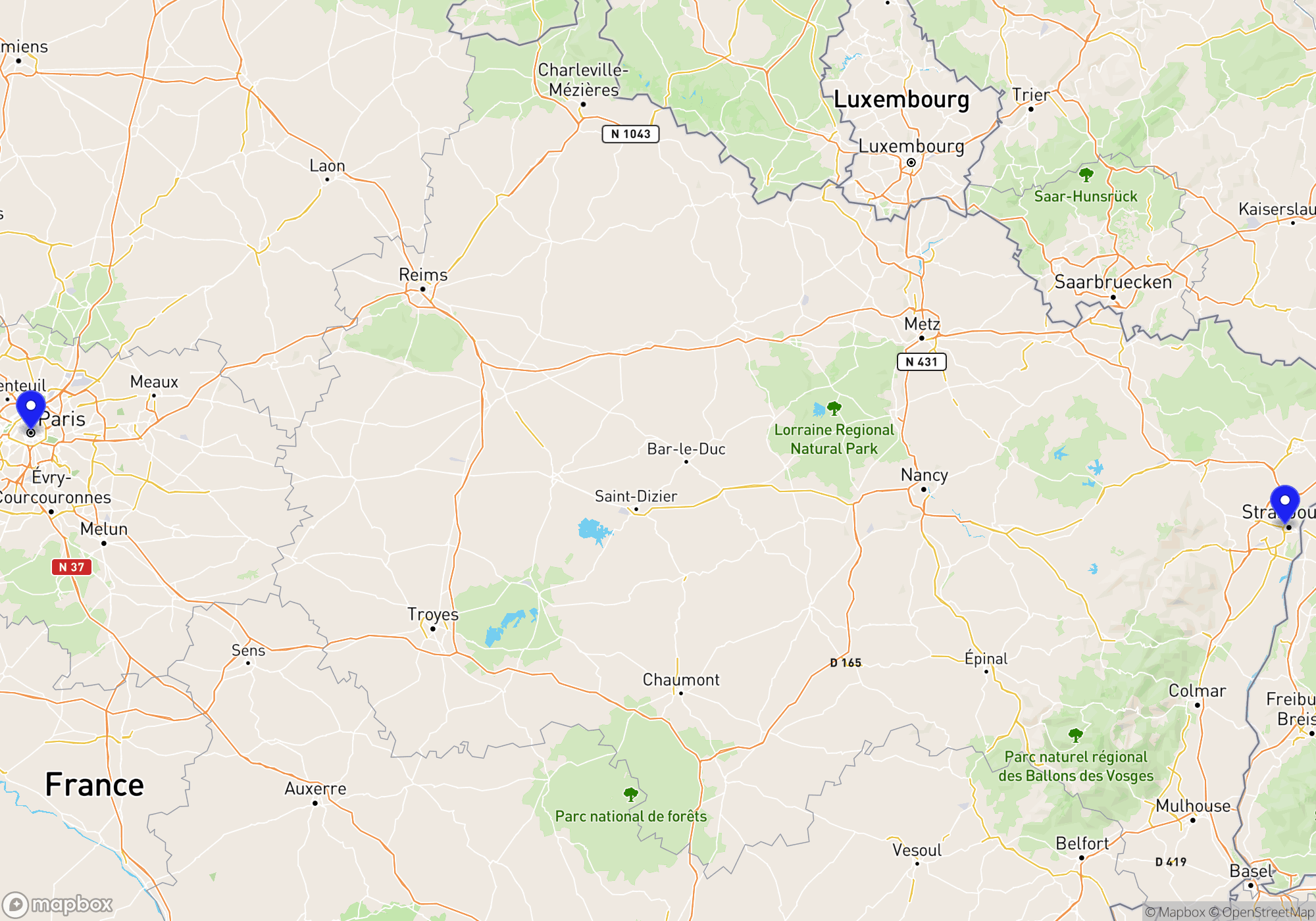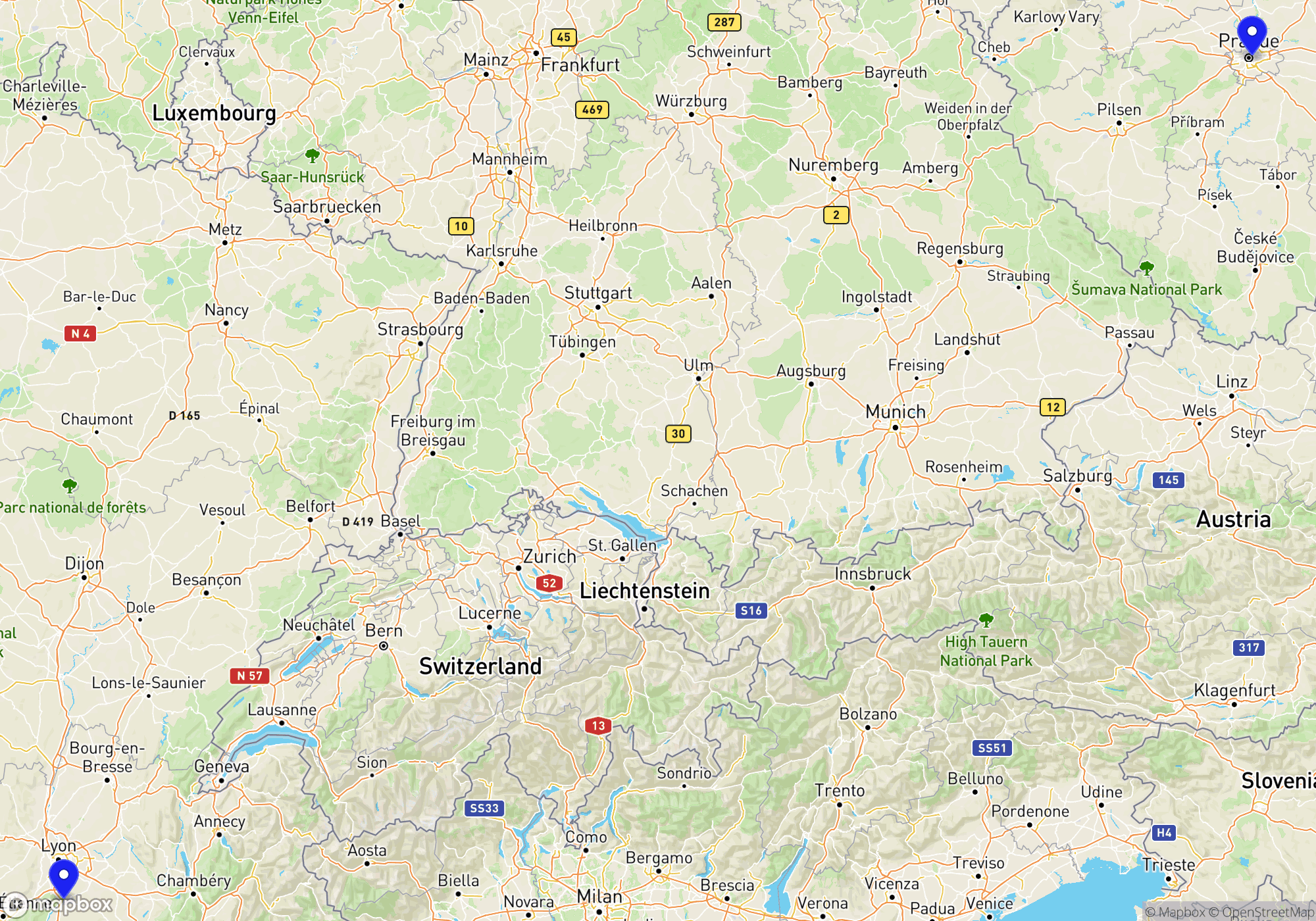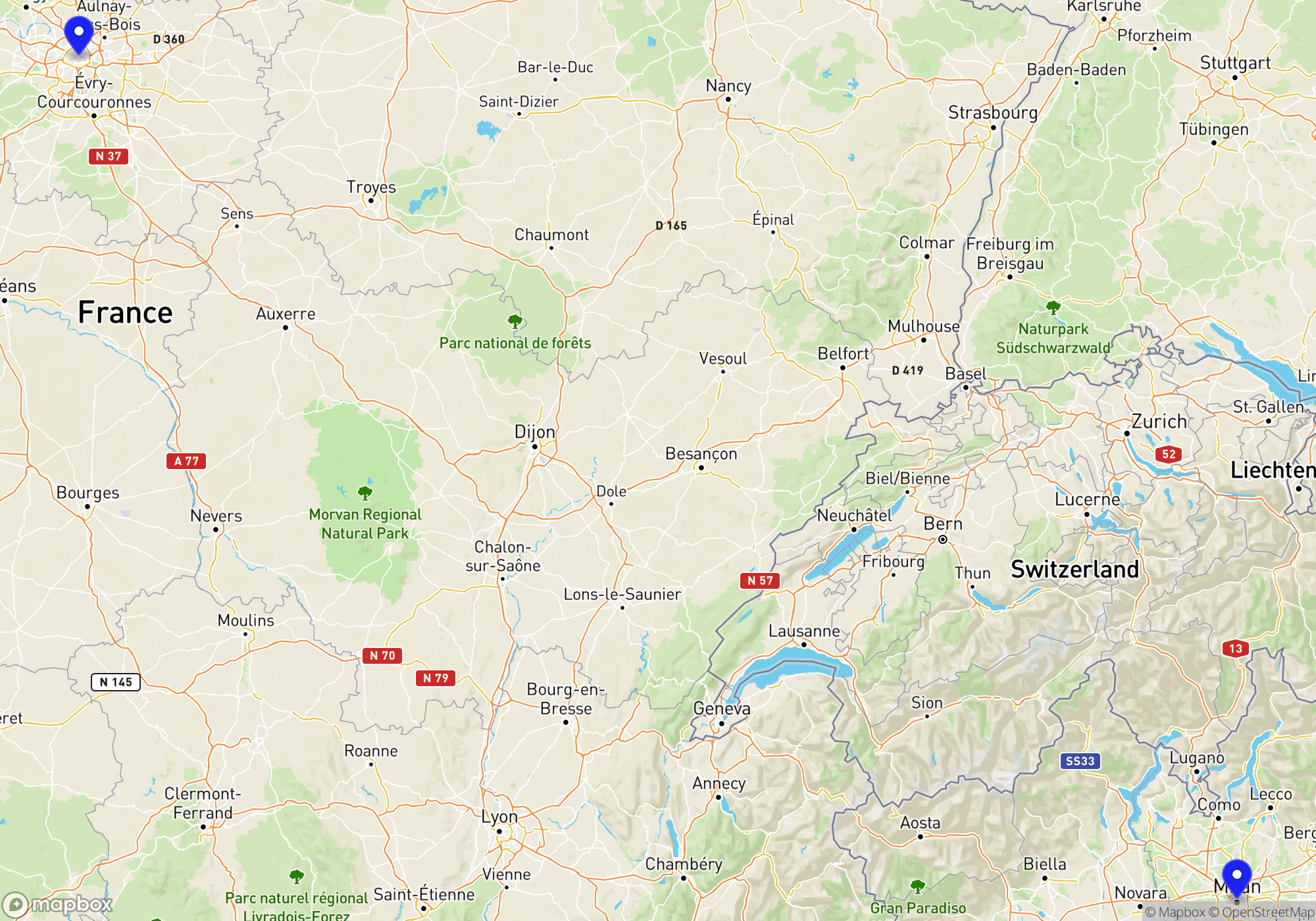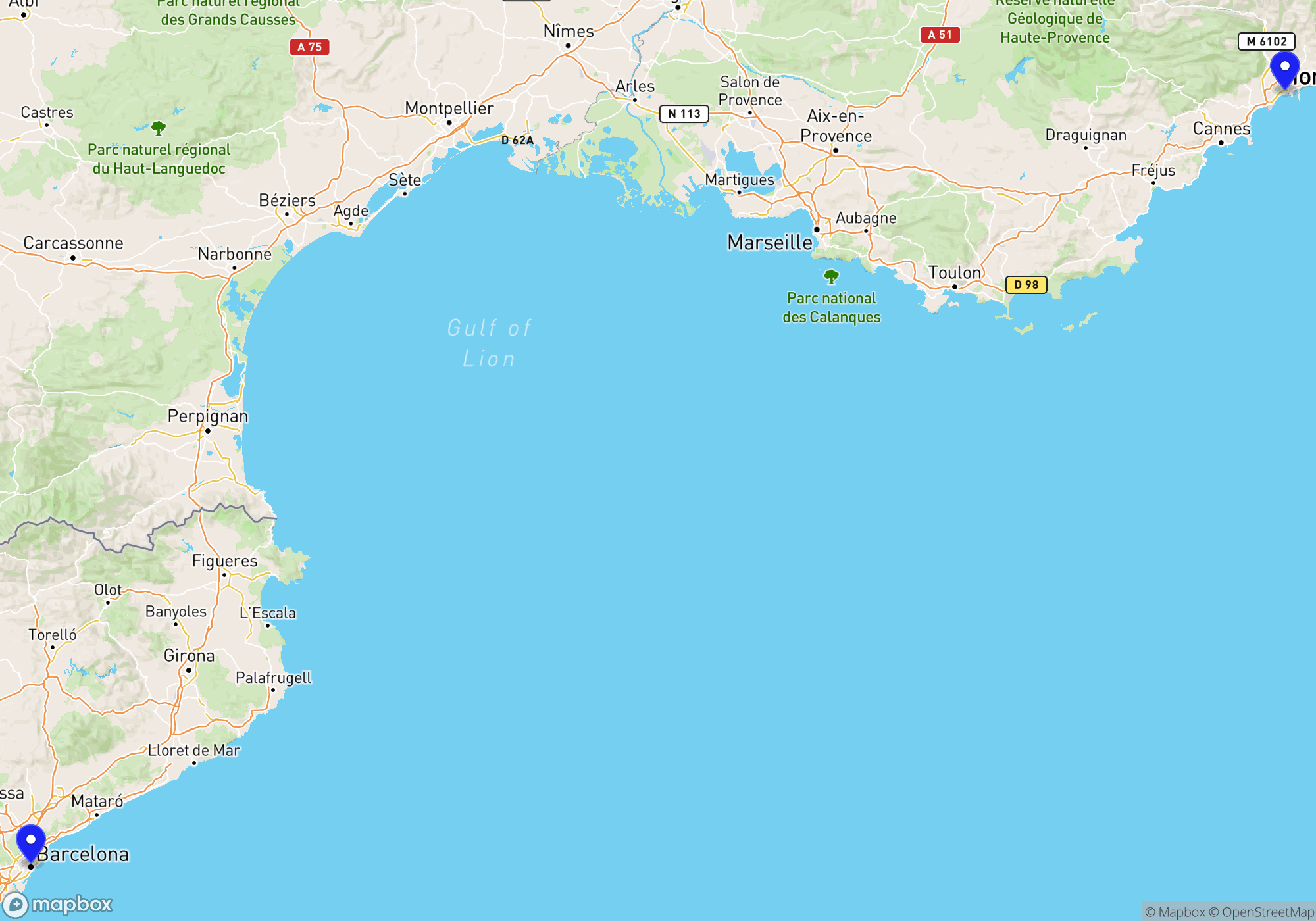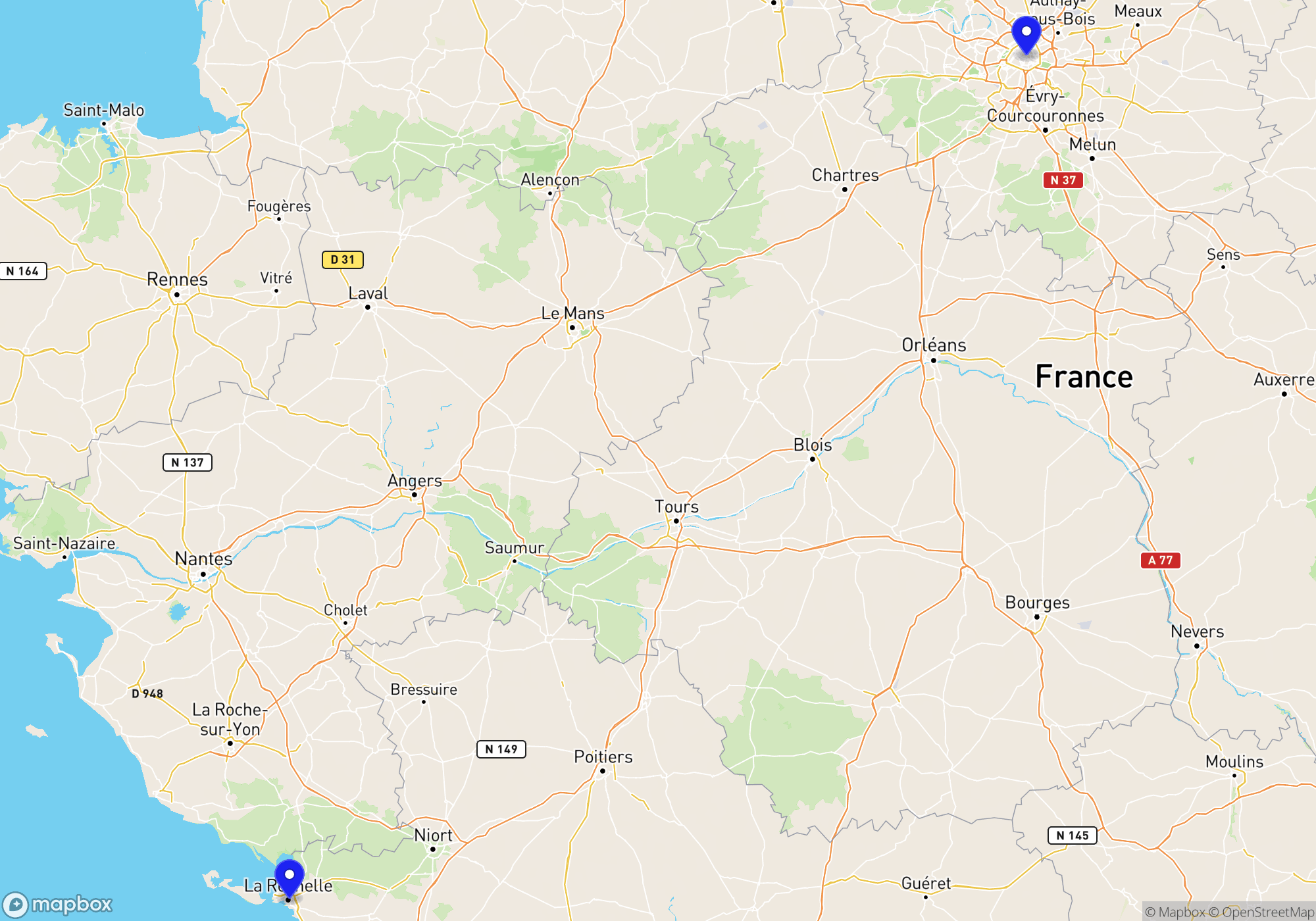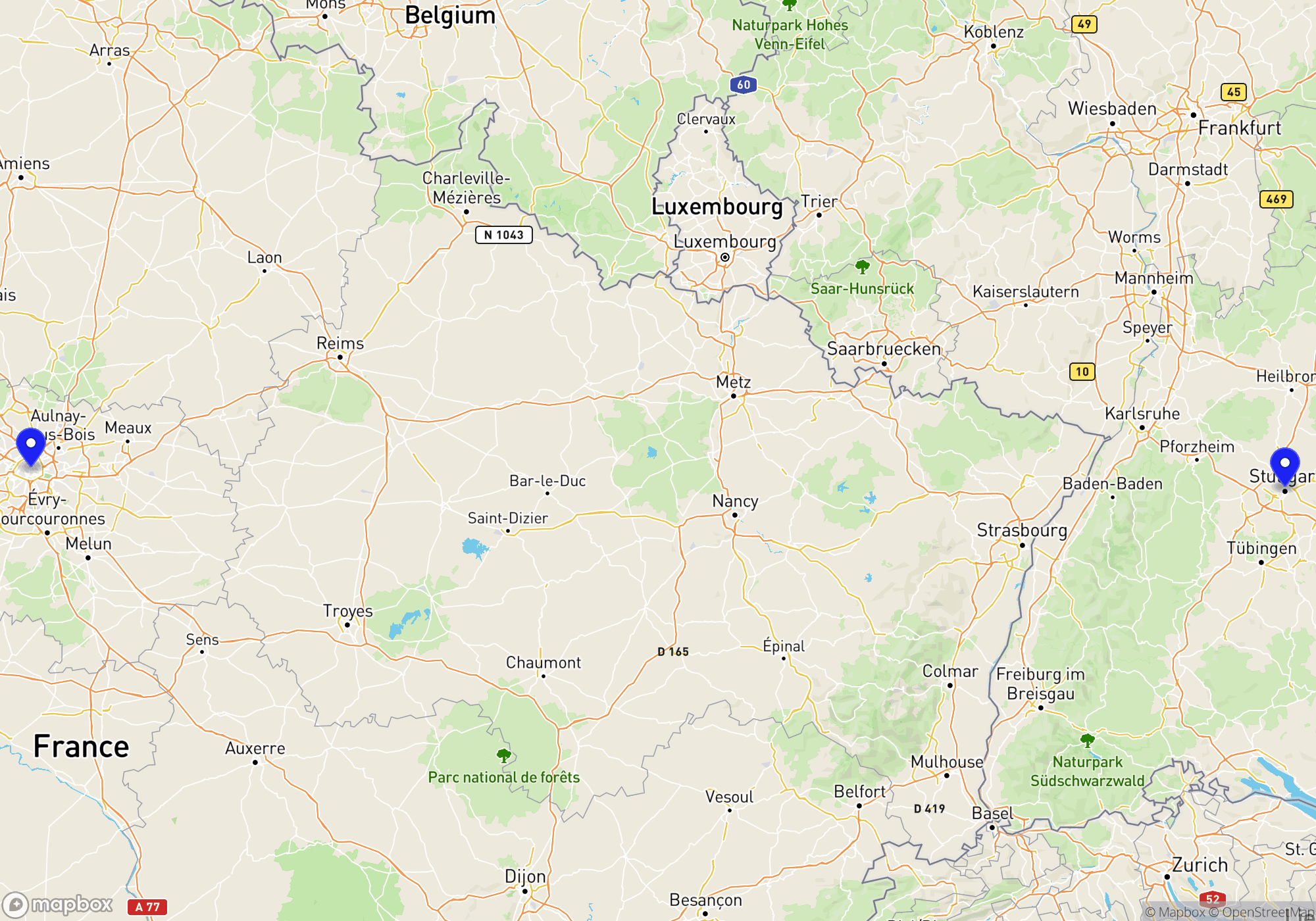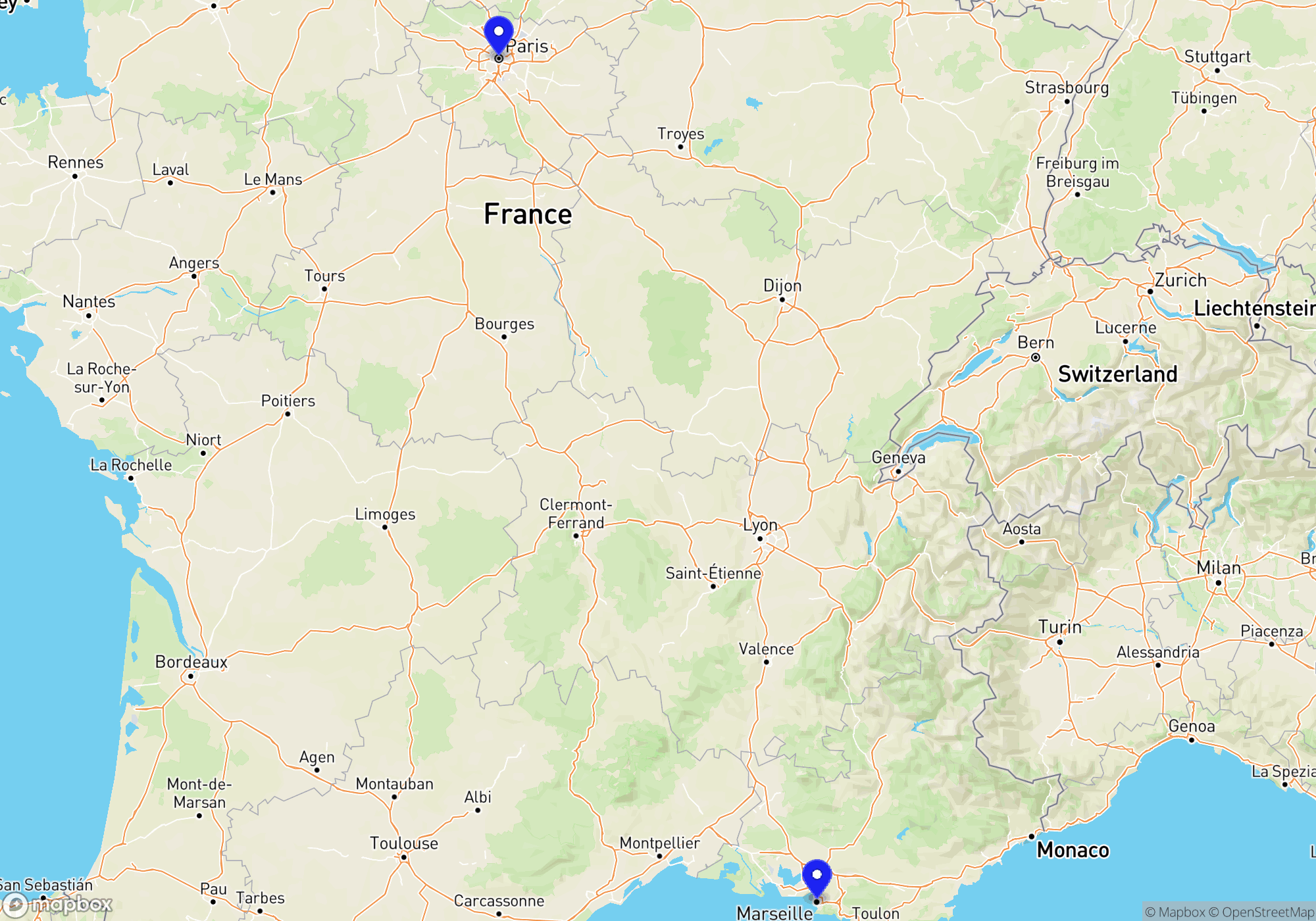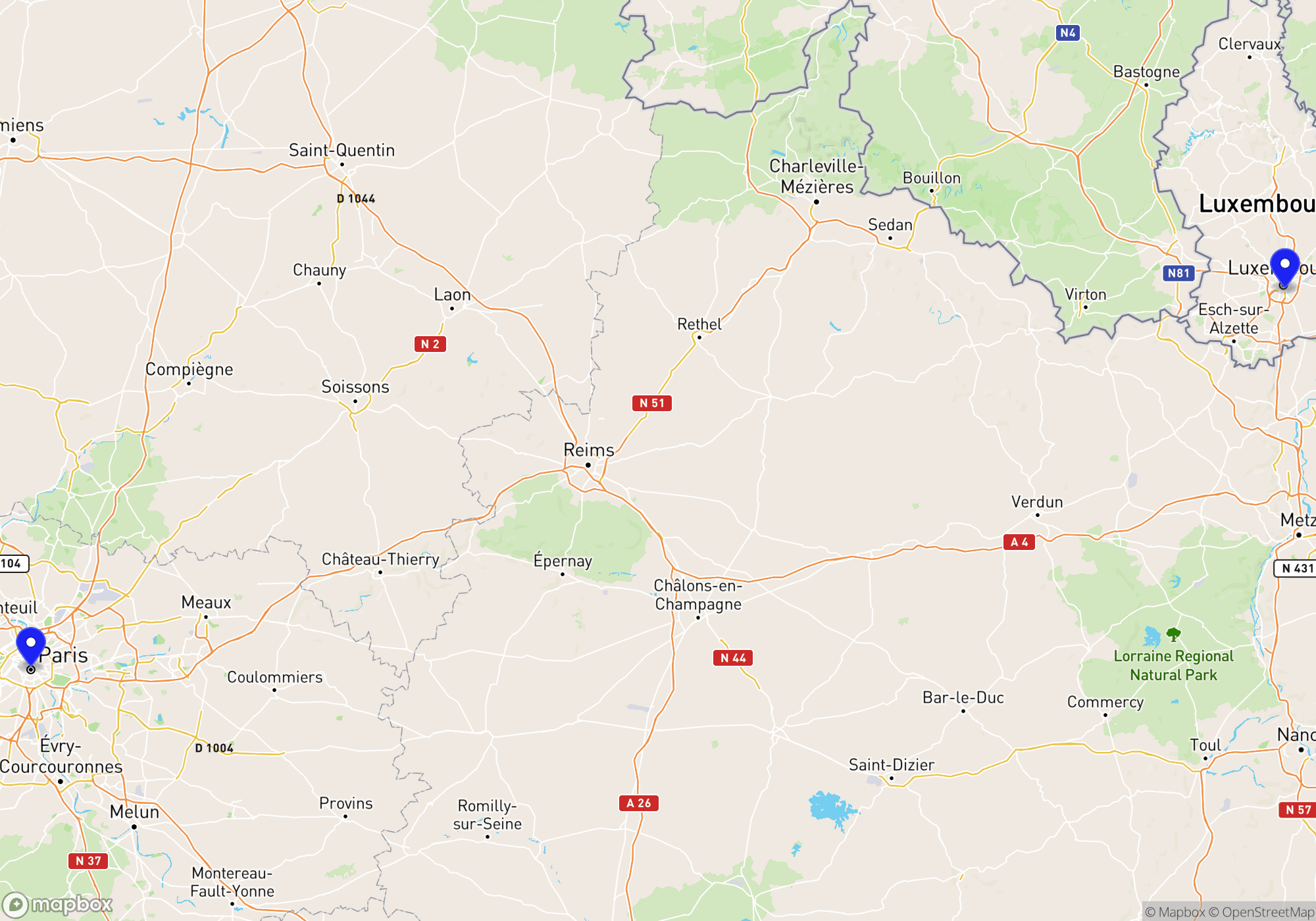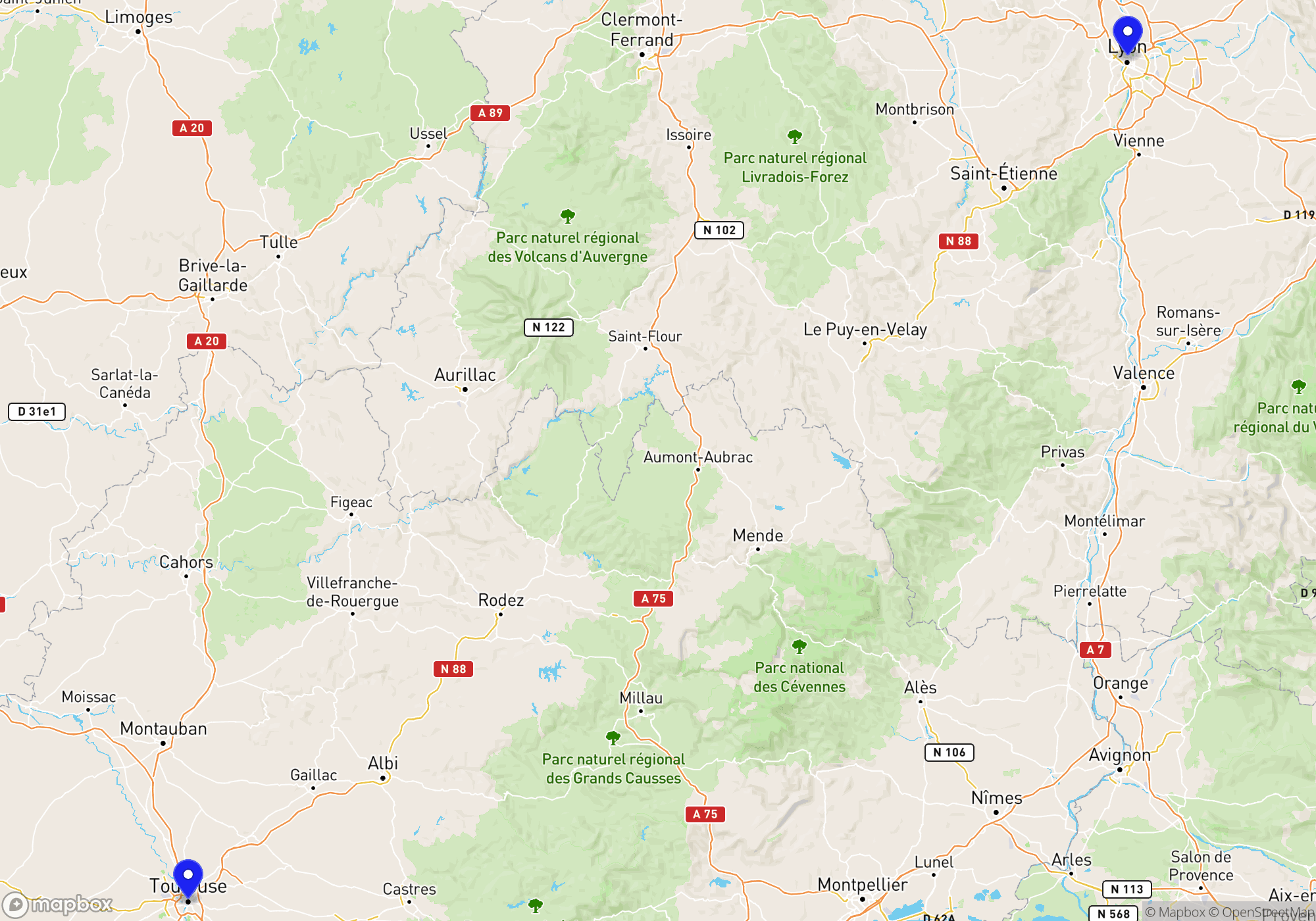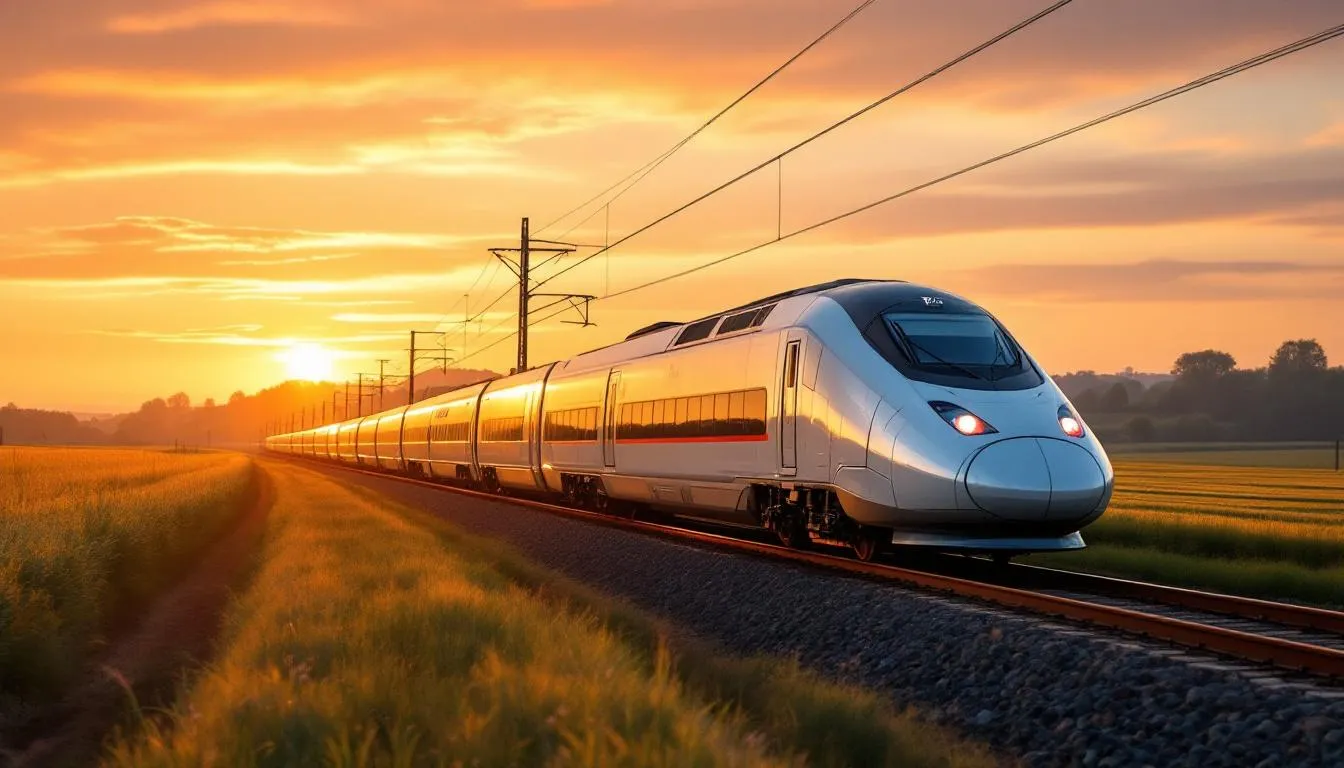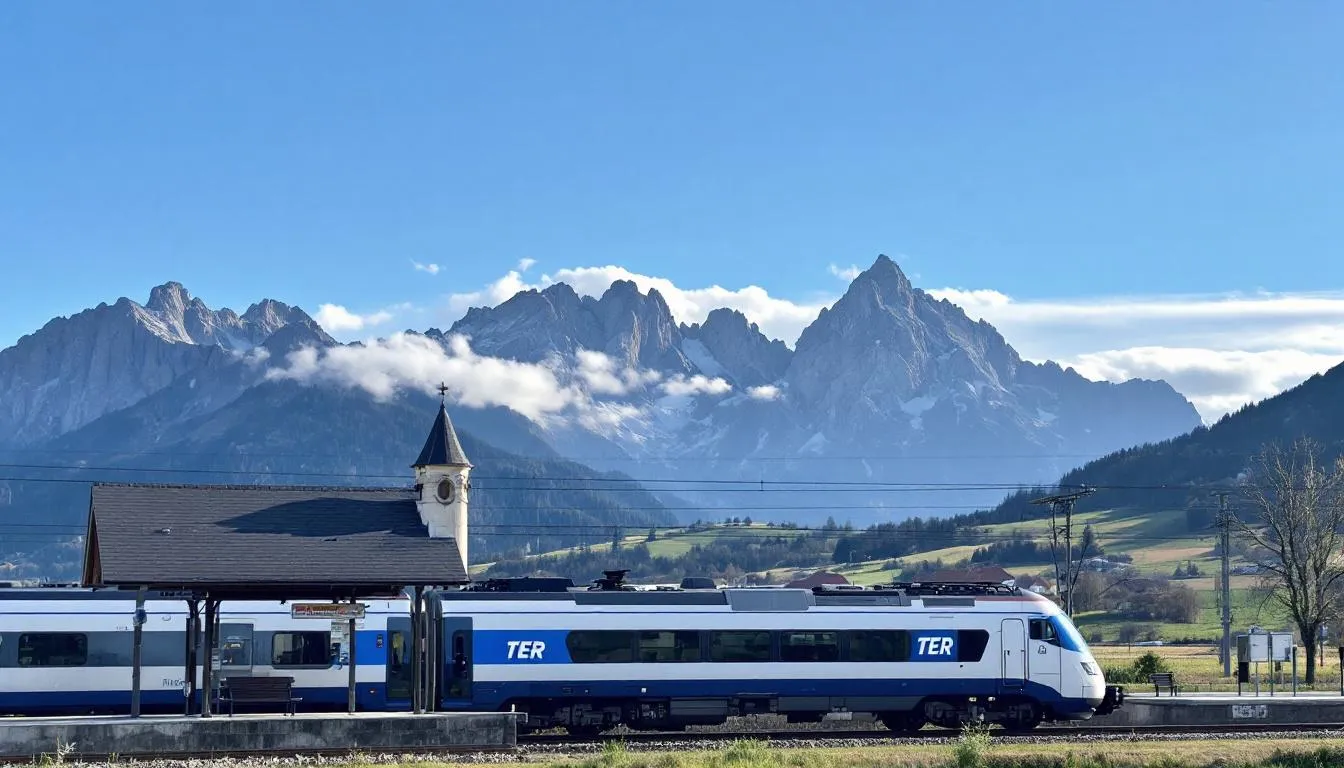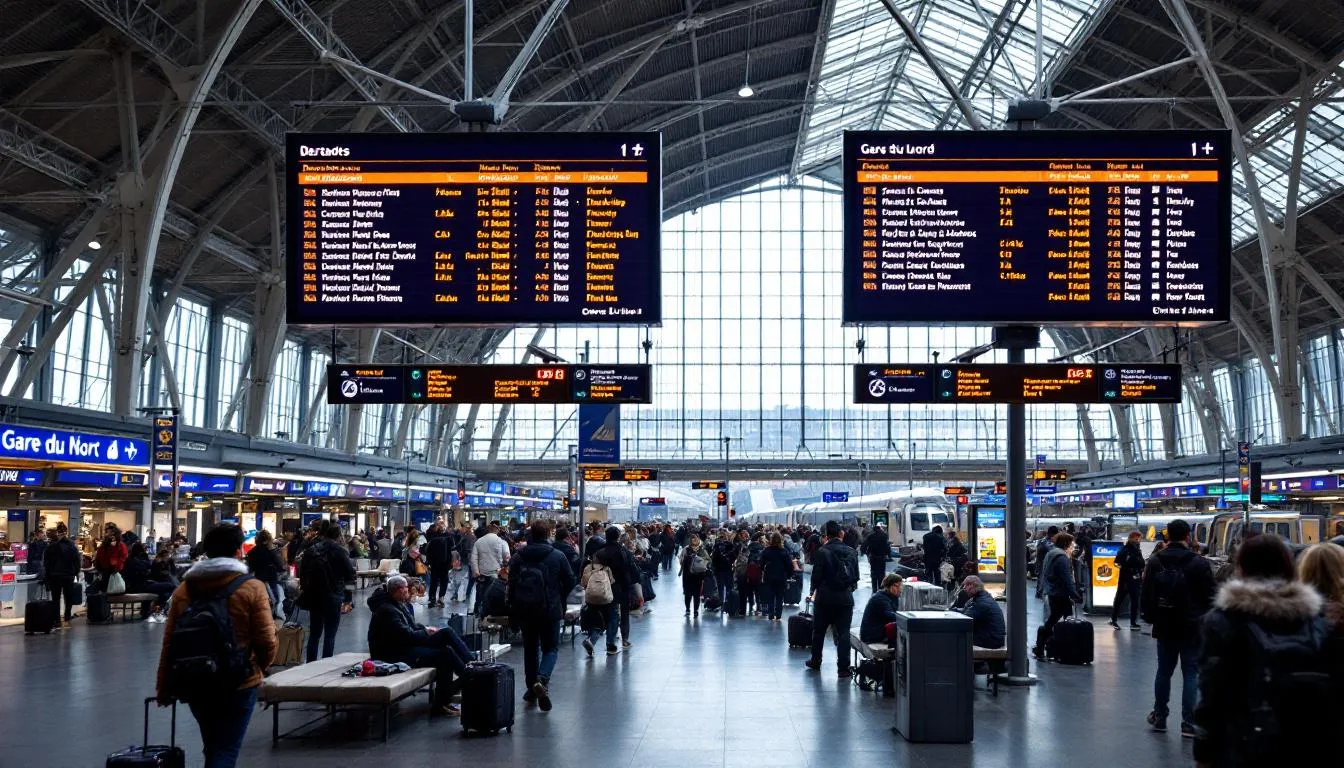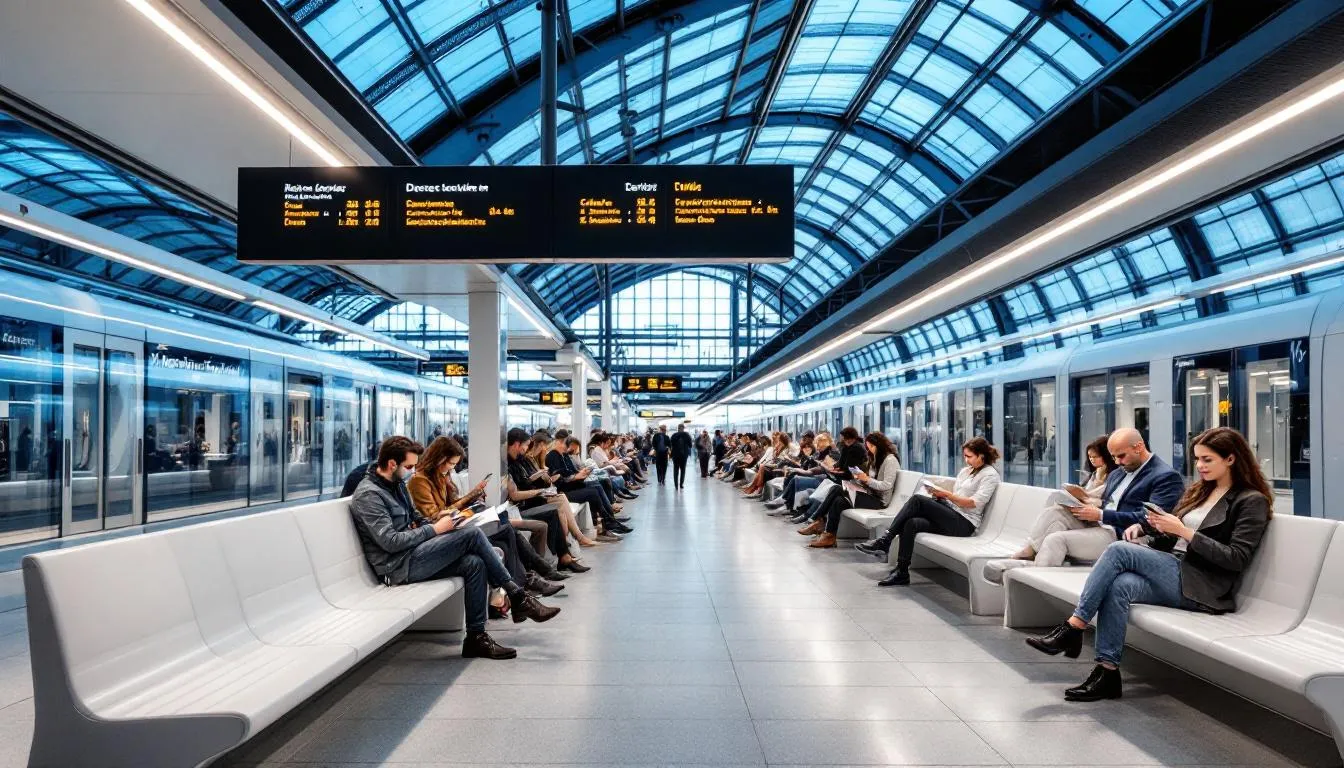France operates one of the world’s most sophisticated and efficient railway networks, serving as a model for high-speed rail development across Europe and beyond. With its iconic TGV trains reaching speeds up to 320 km/h and an extensive network connecting virtually every corner of the country, trains in France offer travelers an unparalleled combination of speed, comfort, and convenience. Whether you’re planning to explore bustling major cities or discover hidden gems in rural regions, understanding the French railway system will transform your travel experience and help you save money while enjoying some of the fastest trains in the world.
This comprehensive guide covers everything you need to know about train travel in France, from booking train tickets and understanding different ticket types to navigating strike disruptions and maximizing your journey with rail passes. We’ll explore the extensive railway network that carries over 5 billion passengers annually, making it Europe’s second-busiest rail system after Germany.
French Railway System Overview
SNCF operates France’s extensive railway network with over 30,000 kilometers of tracks, making it one of the most comprehensive transport systems in Europe. The network serves almost every corner of the country, from bustling metropolitan areas to remote rural villages, ensuring that rail remains a viable option for both domestic routes and international connections.
High-speed TGV trains reach speeds up to 320 km/h connecting Paris to Lyon, Marseille, Bordeaux, and Lille, revolutionizing long distance travel across the country. The train à grande vitesse system has transformed how French citizens and visitors navigate between major cities, reducing journey times that once took six or seven hours by conventional trains to just two or three hours on modern trains.
Regional TER and Intercités trains serve 3,000 stations across France’s 13 regions, providing essential connectivity for smaller communities and enabling seamless connections between long distance trains and local services. These regional services complement the high speed network by offering flexible, frequent departures that don’t require advance reservations.
Annual ridership exceeds 5 billion passengers making it Europe’s second-busiest rail network after Germany. This impressive figure reflects both the quality of SNCF services and the French commitment to sustainable transport solutions. The system’s success stems from decades of investment in infrastructure, rolling stock, and passenger amenities that make train travel an attractive alternative to flights or driving for many journeys.
France’s position as a rail leader in Europe extends beyond its borders through international services like Eurostar, Thalys, and cross-border connections to Spain, Switzerland, and Italy. These international links demonstrate how the French railway system integrates seamlessly with the broader European rail network, making it possible to travel from London to the Mediterranean using high speed services throughout most of the journey.
Major Train Operators in France
The French railway landscape features several key operators that serve different market segments and route types. Understanding these operators helps travelers choose the right service for their needs and budget.
SNCF Connect operates TGV INOUI, Intercités, and TER services nationwide as the primary rail operator in France. Following the merger of various SNCF services under one brand, SNCF Connect provides integrated booking and customer service for the vast majority of trains operated in the country. Their comprehensive network ensures consistent service standards and unified ticketing across all service types.
OUIGO provides budget high-speed travel between Paris, Lyon, Marseille, and Montpellier, offering a more affordable alternative to traditional TGV services. These trains operate from specific stations, often located outside city centers, but deliver the same high speed performance at significantly reduced fares. Passengers can buy train tickets for OUIGO services starting from as little as €10 when booked well in advance.
TGV Lyria connects Paris and Marseille with Swiss cities like Geneva and Zurich, providing seamless international high speed services. This joint venture between SNCF and Swiss Federal Railways operates specially configured TGV trains that meet both French and Swiss technical standards, enabling efficient cross-border operations.
Eurostar links Paris Gare du Nord with London St. Pancras in 2 hours 15 minutes, representing one of the most successful international rail services in Europe. The service revolutionized travel between France and the United Kingdom, offering a city-center to city-center alternative to flying that often proves faster when accounting for airport procedures.
Private operators like Trenitalia France serve Paris-Lyon-Milan routes from December 2021, introducing competition to the previously monopolized high speed market. These new entrants offer alternative pricing structures and service concepts, potentially providing passengers with more choice and competitive fares on popular routes.
|
Operator |
Primary Routes |
Service Type |
Key Features |
|---|---|---|---|
|
SNCF Connect |
Nationwide |
TGV, TER, Intercités |
Comprehensive network, integrated booking |
|
OUIGO |
Paris-Lyon-Marseille-Montpellier |
Budget high-speed |
Low-cost TGV, off-center stations |
|
TGV Lyria |
France-Switzerland |
International high-speed |
Cross-border service, dual standards |
|
Eurostar |
Paris-London |
International high-speed |
Channel Tunnel, city-center connections |
|
Trenitalia France |
Paris-Lyon-Milan |
International high-speed |
Competitive pricing, Italian operator |
Types of French Trains
Understanding the different types of trains operated in France helps travelers select the most appropriate service for their journey, budget, and time constraints. Each train type serves specific market segments with distinct characteristics and booking requirements.
TGV INOUI serves 50+ destinations with mandatory reservations and premium amenities, representing the flagship of French high speed rail services. These trains offer first class and second class seating, onboard catering, and WiFi connectivity. The mandatory seat reservation system ensures guaranteed seating but requires advance planning, particularly during peak travel periods.
TER regional trains connect 20 regions with no reservation required and fixed pricing, providing essential local and regional connectivity throughout France. These trains express régionaux services operate on a turn-up-and-go basis, making them ideal for spontaneous travel and short regional trips. TER trains serve smaller stations that high speed services don’t reach, ensuring comprehensive coverage of the territory.
Intercités medium-distance trains serve 30+ routes not covered by TGV network, filling the gap between regional services and high speed trains. These services typically operate on routes where high speed infrastructure hasn’t been built or where demand doesn’t justify TGV service. Intercités trains offer a comfortable middle ground with optional reservations and moderate journey times.
AGV (Alstom) trains operate on specific routes with speeds up to 360 km/h in testing, though operational speeds remain lower for safety and infrastructure reasons. These newer generation trains represent the evolution of French high speed technology, incorporating advanced materials and improved passenger comfort systems.
Night trains include sleeper services to Nice, Briançon, and international destinations, providing overnight connectivity that saves accommodation costs while maximizing travel time. Though reduced in scope compared to previous decades, these services remain popular for specific routes, particularly to winter sports destinations and international connections.
High-Speed Train Services
The TGV network covers 2,700 kilometers with double-decker TGV Duplex on busy routes, maximizing capacity on popular corridors while maintaining high speed performance. These double-deck configurations can carry up to 508 passengers, making them particularly efficient on routes with high demand such as Paris-Lyon during peak periods.
TGV Sud-Est serves Lyon, Marseille, and Montpellier in under 4 hours from Paris, connecting the capital with France’s second and third-largest cities through the original high speed line. This route demonstrates the time-saving potential of high speed rail, reducing journey times that previously required overnight travel to comfortable same-day trips.
TGV Atlantique reaches Bordeaux in 2 hours, Nantes in 2 hours from Paris Montparnasse, thanks to the relatively recent completion of the LGV Sud Europe Atlantique line. The dramatic reduction in travel time to these western destinations has strengthened economic and cultural connections between Paris and France’s Atlantic coast.
TGV Est connects Paris to Strasbourg in 1 hour 45 minutes, Frankfurt in 3 hours 50 minutes, demonstrating how high speed rail facilitates international business and leisure travel. This route serves as a crucial link between France and Germany, offering competitive journey times compared to flying when considering total travel time.
Regional and Local Services
TER trains serve rural areas with 15,000 daily services across France’s regions, ensuring that even small communities maintain rail connectivity. These regional ter trains operate on both electrified and non-electrified lines, using various types of rolling stock suited to local conditions and passenger volumes.
Transilien serves Île-de-France region with 13 lines connecting Paris suburbs, providing essential commuter services for the capital’s metropolitan area. These services integrate with the Paris Metro and RER systems, creating a comprehensive public transport network that reduces reliance on private cars for urban travel.
Chemins de fer de Provence operates narrow-gauge railway from Nice to Digne-les-Bains, offering one of France’s most scenic rail journeys through the Maritime Alps. This heritage line demonstrates how regional services can combine practical transport with tourist attractions, serving both local communities and visitors.
Tourist trains like Train Jaune in Pyrénées and Train des Pignes offer scenic journeys that showcase France’s natural beauty while providing regular transport services. These routes often operate vintage rolling stock and follow spectacular routes that highlight the engineering achievements of early railway builders.
Ticket Types and Pricing Structure
Understanding the French railway pricing structure helps travelers optimize their costs while securing appropriate comfort levels and flexibility. The pricing system balances advance booking discounts with flexible options for last-minute travel.
Prem’s tickets offer savings up to 60% when booked 3-4 months in advance but non-refundable, making them ideal for travelers with fixed itineraries who want to save money. These deeply discounted fares typically sell out quickly on popular routes, particularly for weekend and holiday travel.
Standard Second Class tickets range from €25-120 for TGV depending on route and timing, providing comfortable seating with power outlets and reasonable legroom. Pricing varies significantly based on demand, with peak hours and popular travel days commanding premium prices.
First Class tickets cost 30-50% more with spacious seating and complimentary refreshments, offering enhanced comfort for longer journeys. The additional fee provides noticeably more space, quieter coaches, and included meal service on many routes, making it worthwhile for business trips or extended travel.
Business Première available Paris-Bordeaux/Nantes/Rennes with lounge access for €200-300, targeting business travelers who value premium amenities and flexibility. This service level includes station lounge access, priority boarding, and enhanced meal service, justifying the premium pricing for corporate travel.
TER tickets have fixed regional pricing from €2-50 without advance booking discounts, providing predictable costs for regional travel. This simplified pricing structure makes regional trains accessible for local communities while offering visitors transparent, easy-to-understand fares.
|
Ticket Type |
Price Range |
Advance Booking |
Flexibility |
Target User |
|---|---|---|---|---|
|
Prem’s |
€10-50 |
3-4 months |
Non-refundable |
Budget travelers |
|
Standard 2nd |
€25-120 |
Up to 4 months |
Exchangeable (fee) |
General travelers |
|
Standard 1st |
€40-180 |
Up to 4 months |
Exchangeable (fee) |
Comfort seekers |
|
Business Première |
€200-300 |
Up to 4 months |
Flexible |
Business travelers |
|
TER Regional |
€2-50 |
Not required |
Flexible |
Regional travelers |
Booking Train Tickets in France
The booking process for trains in France has evolved to provide multiple convenient options for both advance planning and last-minute travel. Understanding these options helps ensure smooth ticket purchase and travel.
SNCF Connect website and app offer tickets 4 months in advance with mobile tickets, providing the most comprehensive booking platform for all French train services. The unified platform replaced the previous OUI.SNCF system, offering improved functionality and better integration across different service types. Mobile tickets eliminate the need for physical ticket collection, streamlining the travel process.
Station ticket machines accept cards and cash with multilingual interfaces, providing an alternative for travelers who prefer not to book online or need last-minute tickets. These machines are available at virtually every station and offer full functionality including seat selection for services requiring reservations.
Ticket windows at major stations provide personal assistance for complex journeys, international connections, or travelers requiring special assistance. Staff can help with route planning, explain different ticket types, and handle group bookings or modifications that might be difficult through automated systems.
OUI.SNCF discontinued in 2022, replaced by unified SNCF Connect platform that consolidates all French rail booking services. This change simplified the booking process by eliminating confusion between different SNCF brands and providing consistent user experience across all service types.
International booking through Omio, Trainline, or Rail Europe with booking fees provides convenience for travelers preferring familiar platforms or needing customer service in their native language. While these platforms charge additional fees, they often provide better integration with other transport modes and more flexible payment options.
Step-by-step booking guide:
-
Visit SNCF Connect website or download the mobile app
-
Enter departure and arrival stations with travel date and time
-
Select from available trains and fare options
-
Choose seat preferences (window, aisle, quiet car)
-
Add passenger details and select ticket delivery method
-
Complete payment and save mobile ticket or PDF
-
Present ticket and ID when boarding (spot checks may occur)
Top Train Routes and Destinations
France’s railway network excels at connecting major cities efficiently while providing access to diverse regions and tourist destinations. Understanding the most popular routes helps travelers plan effective itineraries and set realistic expectations for journey times.
Paris-Lyon TGV route covers 462 km in 1 hour 57 minutes with 24 daily services, representing the backbone of French high speed rail. This route consistently ranks among the world’s busiest high speed corridors, demonstrating sustained demand for fast, frequent service between France’s two largest urban areas. The frequent departures provide flexibility for both business and leisure travelers.
Paris-Marseille journey takes 3 hours 20 minutes serving Côte d’Azur destinations, connecting the capital with the Mediterranean coast and France’s second-largest metropolitan area. This route provides access to popular destinations including Aix-en-Provence, Avignon, and connections to Nice, making it essential for both domestic travel and international visitors exploring southern France.
Paris-Bordeaux route reduced to 2 hours in 2017 with new LGV Sud Europe Atlantique, dramatically improving connectivity to France’s wine capital and Atlantic coast. The journey time reduction from over 3 hours to just 2 hours transformed this route into a viable option for day trips and weekend breaks, significantly boosting tourism and business connections.
Alpine routes serve ski resorts via Bourg-Saint-Maurice and Chambéry connections, providing essential winter sports access. These seasonal services often feature special rolling stock adapted for mountain conditions and increased luggage capacity for skiing equipment. Summer services also provide access to hiking and mountain tourism destinations.
Cross-border routes include Paris-Geneva, Paris-Amsterdam, and Paris-Barcelona, demonstrating France’s integration with the broader European rail network. These international high speed services often prove competitive with flying, particularly when considering total journey time and city-center convenience.
|
Route |
Distance |
Journey Time |
Daily Services |
Key Destinations |
|---|---|---|---|---|
|
Paris-Lyon |
462 km |
1h 57m |
24 |
Lyon, connecting to southeast |
|
Paris-Marseille |
750 km |
3h 20m |
14 |
Marseille, Avignon, Aix |
|
Paris-Bordeaux |
568 km |
2h 05m |
16 |
Bordeaux, connecting to Spain |
|
Paris-Strasbourg |
450 km |
1h 45m |
10 |
Strasbourg, connecting to Germany |
|
Paris-Nice |
687 km |
5h 30m |
6 |
Nice, Cannes, Monaco |
Paris Train Stations Guide
Understanding Paris’s major train stations ensures smooth connections and reduces travel stress in the complex urban environment. Each station serves specific regions and international destinations, requiring travelers to verify departure points when booking train tickets.
Gare du Nord serves northern routes including Eurostar, Thalys, and TER Hauts-de-France, making it one of Europe’s busiest stations. The station’s international services connect directly to London, Brussels, Amsterdam, and Cologne, while domestic services reach destinations in northern France. Recent renovations have improved passenger flow and commercial facilities.
Gare de Lyon handles southeastern destinations including TGV to Lyon, Marseille, Geneva, serving as the gateway to southern France, the Alps, and Switzerland. The station’s iconic clock tower and Belle Époque architecture make it one of Paris’s most recognizable transport hubs. Multiple levels separate different service types, requiring attention to departure boards and platform announcements.
Gare Montparnasse serves western France including TGV to Bordeaux, Nantes, Rennes, following the completion of high speed lines to these destinations. The modern station design provides clear passenger flow and comprehensive commercial services, making it particularly user-friendly for travelers unfamiliar with the layout.
Gare de l’Est covers eastern routes to Strasbourg, Frankfurt, and overnight trains to Vienna and other Central European destinations. The station serves as France’s primary gateway to Germany and Central Europe, offering both high speed services and traditional international routes with sleeper cars.
Gare Saint-Lazare and Gare d’Austerlitz serve regional and limited long distance trains, with Saint-Lazare primarily handling Normandy commuter services and Gare d’Austerlitz serving southwestern France and Spain via conventional routes. These stations complement the high speed terminals by providing comprehensive regional coverage.
Travel Tips by Passenger Type
Different types of travelers have distinct needs and can benefit from targeted advice to optimize their train travel experience in France. Understanding available discounts and services helps maximize value and convenience.
Students get 27-60% discounts with Carte Avantage Jeune (€49 annual fee) for under-27s, making train travel particularly affordable for young travelers. The card provides guaranteed discounts even on peak travel days and includes benefits for accompanying passengers, making it valuable for group travel. Additional discounts apply to international services and partner transport operators.
Families receive free travel for children under 4, 50% discount ages 4-11 on most services, significantly reducing travel costs for family trips. Many trains provide family compartments or designated family areas with additional space and amenities. The SNCF Connect app allows families to select seats together and access special family offers.
Business travelers benefit from flexible tickets, first-class lounges, and priority boarding, ensuring productive and comfortable travel. Business Première service includes dedicated check-in areas, complimentary refreshments, and WiFi access optimized for work. Flexible exchange and refund policies accommodate changing business schedules without financial penalties.
Senior citizens (60+) save 25-30% with Carte Avantage Senior on off-peak travel, providing significant savings for leisure travel during quieter periods. The card includes benefits for accompanying passengers and special offers for hotel bookings and tourist attractions, creating comprehensive value for senior travelers.
International visitors can use Eurail Pass or Interrail Pass for unlimited train travel across multiple countries, offering convenience and potential savings for multi-destination trips. These rail passes include access to high speed services with advance reservations and provide flexibility to modify itineraries without additional ticket purchases.
Key benefits by passenger type:
-
Students: Carte Avantage Jeune provides up to 60% savings plus companion discounts
-
Families: Children under 4 travel free, ages 4-11 receive 50% discount
-
Business: Flexible tickets, lounge access, priority services, productive travel environment
-
Seniors: Carte Avantage Senior offers 25-30% savings on off-peak travel
-
International: Eurail and Interrail passes provide unlimited travel flexibility
Digital Services and Mobile Apps
France’s railway system has embraced digital technology to enhance passenger experience and streamline travel processes. These services reduce friction points and provide real-time information essential for efficient travel.
SNCF Connect app provides real-time updates, mobile tickets, and seat selection, consolidating all French rail services in one platform. The app’s offline functionality ensures ticket access even without internet connectivity, while push notifications keep travelers informed of delays or platform changes. Integration with smartphone wallets simplifies ticket management and reduces the risk of lost tickets.
Assistant SNCF chatbot helps with journey planning and ticket information via WhatsApp, providing 24/7 customer service without human intervention. The chatbot can handle routine inquiries, provide delay information, and assist with basic booking modifications, freeing human agents for complex issues.
Citymapper integration shows train times with metro/bus connections in major cities, enabling seamless multimodal journey planning. This integration helps travelers optimize connections and reduces stress when navigating complex urban transport networks, particularly valuable for visitors unfamiliar with local systems.
SNCF WiFi available free on TGV INOUI and most Intercités trains enables productive travel and entertainment during journeys. The service provides adequate bandwidth for email, web browsing, and streaming, though performance may vary based on route and network conditions. Business travelers particularly value this amenity for maintaining productivity during travel.
Digital delay compensation automatically processed for eligible disruptions over 30 minutes ensures passengers receive appropriate compensation without manual claims. The system automatically credits compensation to payment cards or SNCF accounts, eliminating paperwork and reducing administrative burden for both passengers and SNCF.
Strike Information and Disruption Management
Understanding how to handle strikes and disruptions is essential for anyone relying on trains in France, as industrial action remains a regular feature of the French labor landscape. Proper preparation and awareness of alternatives can minimize travel disruption.
French rail strikes typically announced 5 days in advance with service level predictions, providing travelers with advance warning to modify plans or arrange alternatives. SNCF publishes detailed information about expected service levels by route and train type, enabling informed decision-making about travel plans.
SNCF guarantees minimum service levels during strikes: 60% TGV, 40% Intercités, 30% TER, ensuring some connectivity even during significant industrial action. These minimum service commitments focus on maintaining essential connections between major cities while preserving some regional services for communities with limited alternatives.
Strike periods often coincide with pension reforms and occur 10-15 days annually, typically following predictable patterns related to government policy and labor negotiations. Understanding these patterns helps travelers avoid booking during high-risk periods or prepare appropriate contingency plans.
Alternative transport includes BlaBlaCar ridesharing, FlixBus, and domestic flights, providing backup options when rail services are disrupted. These alternatives often experience increased demand and pricing during strikes, making advance booking essential for securing availability at reasonable fares.
Automatic refunds apply for cancelled trains; exchange fees waived during strikes, ensuring passengers don’t bear financial costs from service disruptions. SNCF’s compensation policies generally exceed legal requirements, providing goodwill credits and flexible rebooking options to maintain customer satisfaction.
Strike management checklist:
-
Check SNCF Connect app for strike announcements 5 days before travel
-
Consider alternative departure days if schedule is flexible
-
Book backup transport options (BlaBlaCar, FlixBus) if available
-
Verify minimum service levels for your specific route
-
Ensure tickets are exchangeable/refundable before purchasing
-
Plan extra time for potentially crowded services
-
Keep digital copies of tickets for easier modifications
Conclusion
Trains in France represent one of the world’s most comprehensive and efficient railway systems, offering travelers an exceptional combination of speed, comfort, and accessibility. From the lightning-fast TGV trains that connect major cities in record time to the reliable regional services that reach almost every corner of the country, French trains provide an environmentally sustainable and often cost-effective alternative to flying or driving.
Understanding the different operators, ticket types, and booking strategies enables travelers to optimize their experience while potentially saving significant money through advance booking and appropriate rail passes. Whether you’re planning a business trip between Paris and Lyon, exploring the scenic routes to French cities in the Alps, or embarking on long distance travel across multiple countries, France’s extensive railway network provides the foundation for memorable and efficient journeys.
The digital services and mobile apps make booking train tickets and managing travel increasingly seamless, while the comprehensive information about strikes and disruptions helps travelers navigate occasional challenges. With proper planning and awareness of the options available, train travel in France offers one of the world’s premier railway experiences, combining cutting-edge technology with the romance and convenience of rail transport.
Start planning your French railway adventure today by downloading the SNCF Connect app and exploring the incredible destinations accessible through this remarkable network that has set the global standard for high speed rail excellence.

